

WORLD CHAMPION
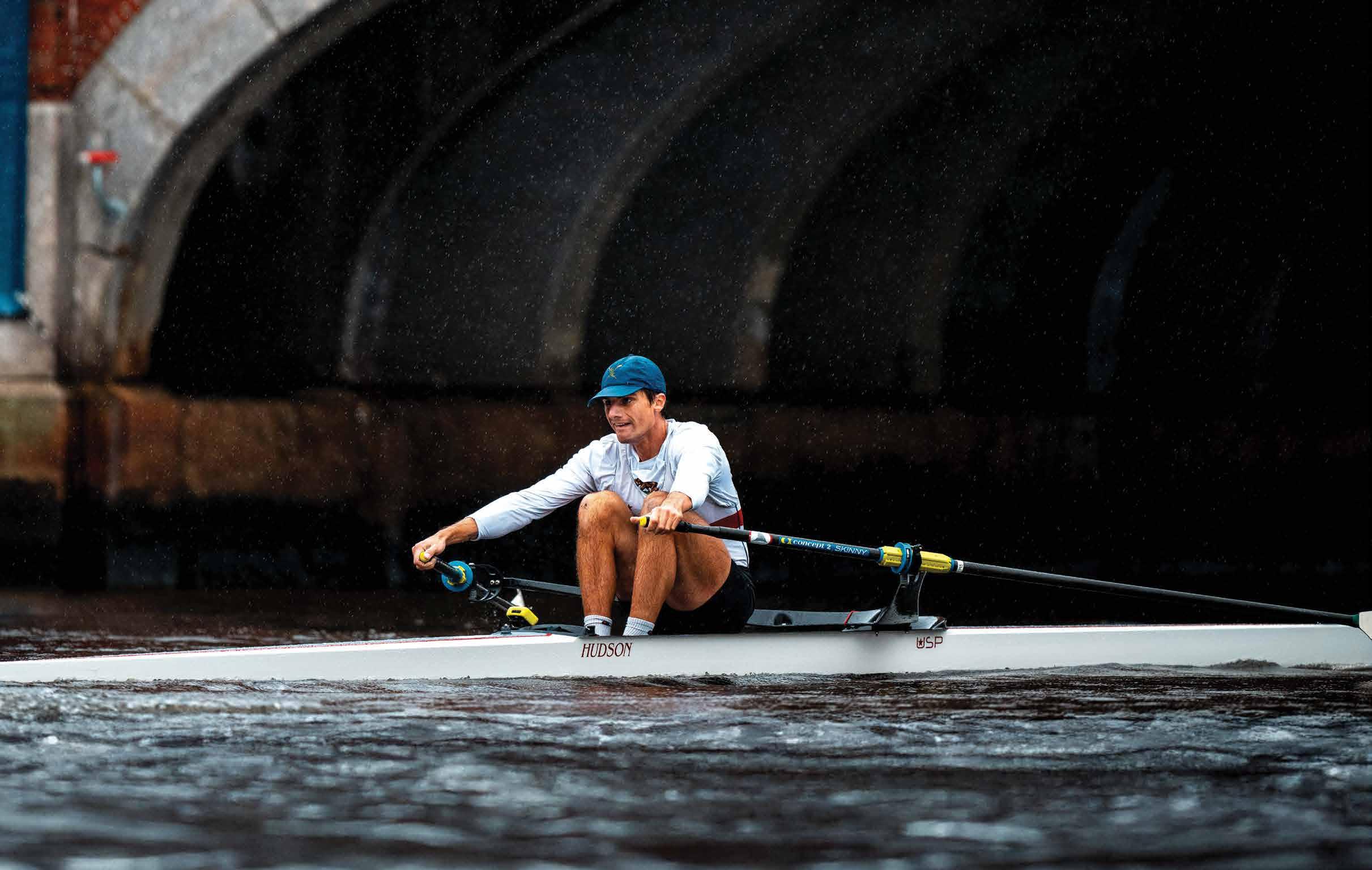
James Dietz Hydrow Athlete
Benedict Tufnell

Course Record 16:57 Men’s Championship Single
Sorin Koszyk, SHARK Team // U1.32


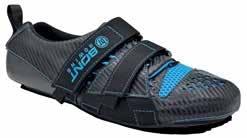
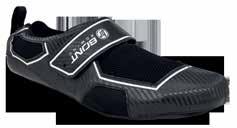
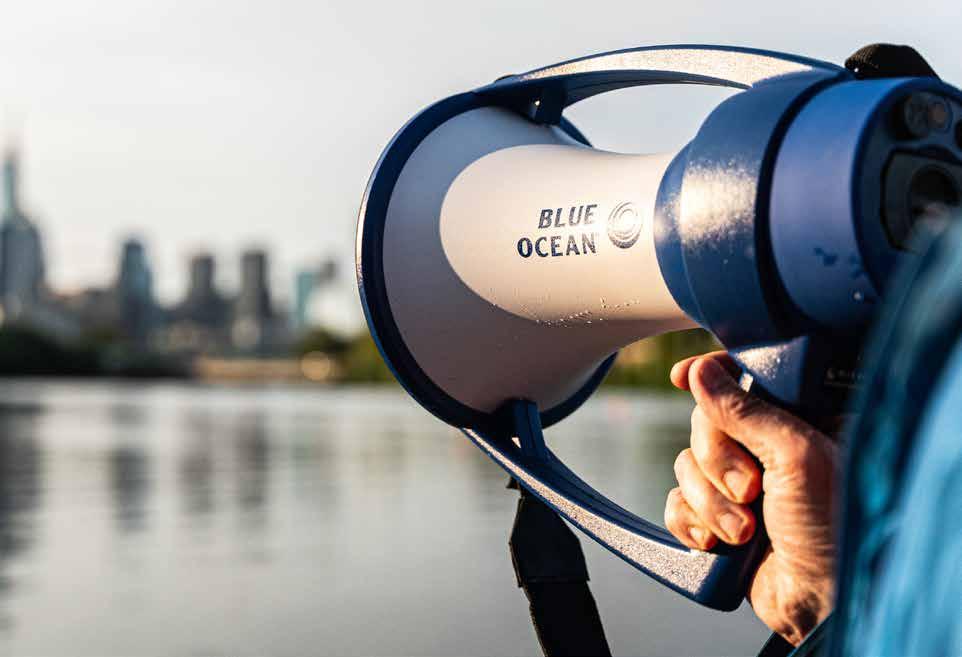

This fall, upgrade your coaching toolkit with two NK essentials:
Blue Ocean® Megaphone – Trusted by coaches and referees for clear, long-range communication on the water. Rugged, waterproof, and built to last, it keeps your voice strong in any conditions. Backed by NK’s 5-year warranty.
Interval® 2000 Split Watch – The coach’s classic for timing, splits, and efficiency. Reliable, durable, and designed for the demands of rowing programs everywhere.

Fluidesign
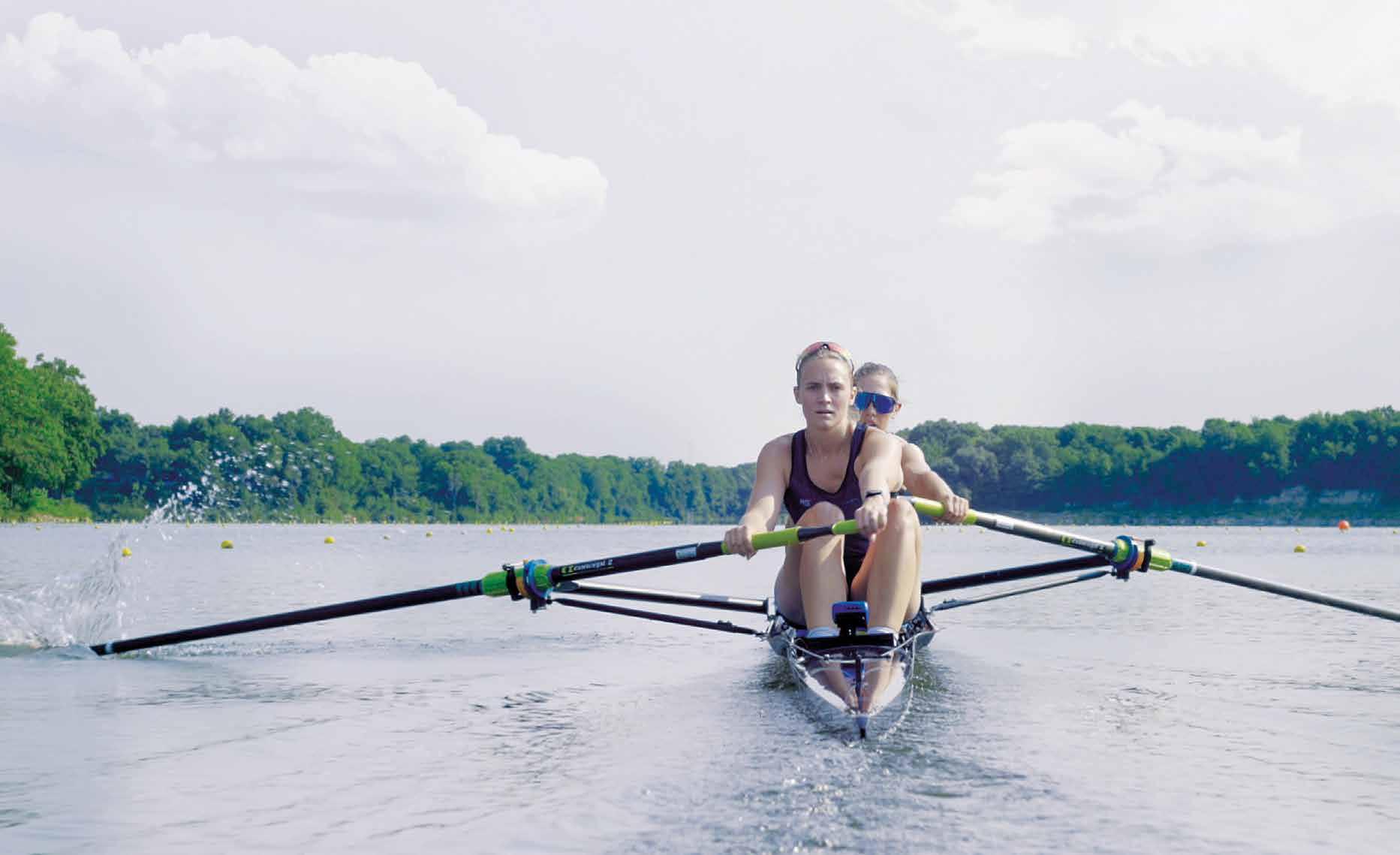
Photo credit: FBM Photography






At 25 Lbs. the Lightest Singles in Production
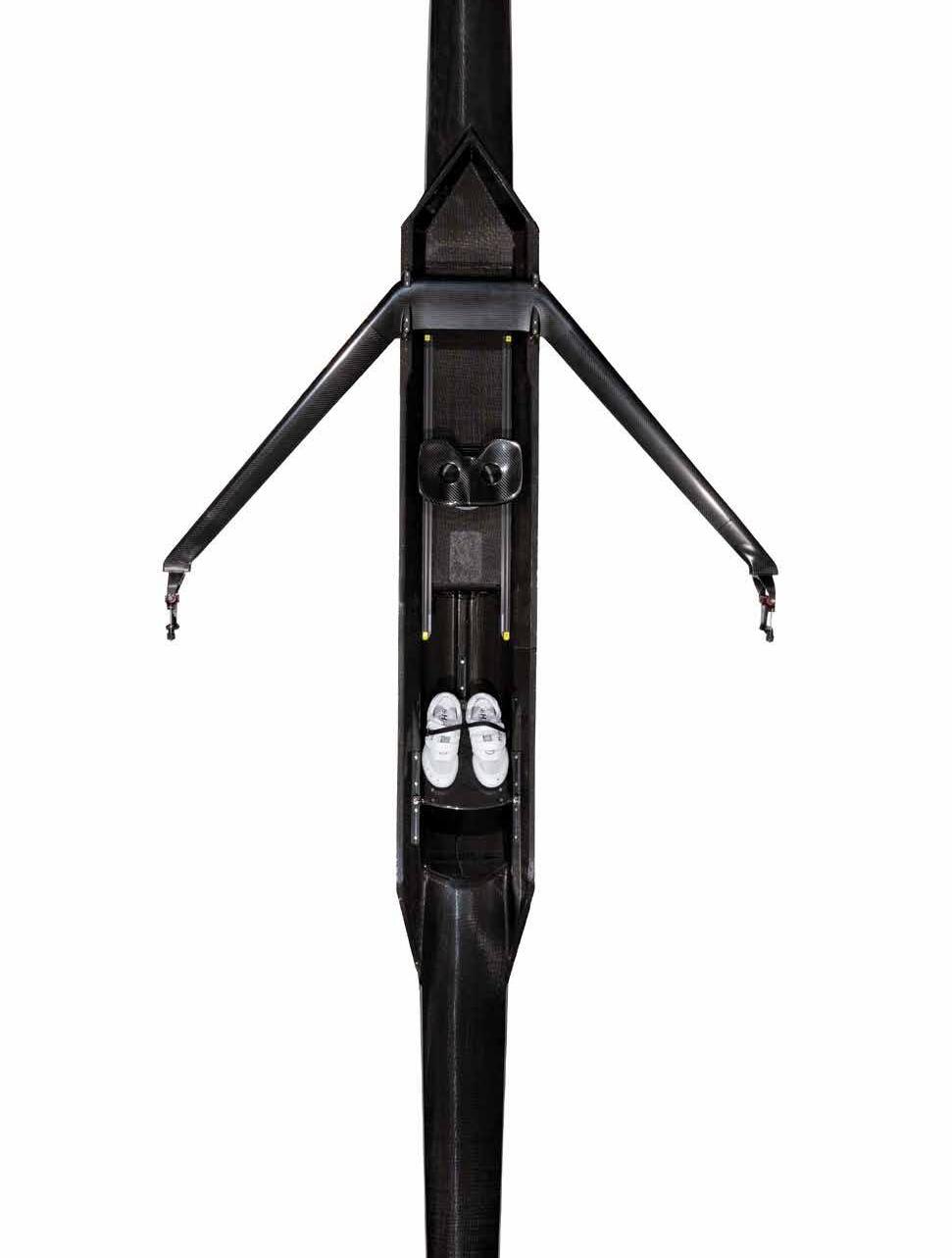
• Less Drag, More Speed
• Lighter Feel, Higher Stroke Rate
• Easier to Carry
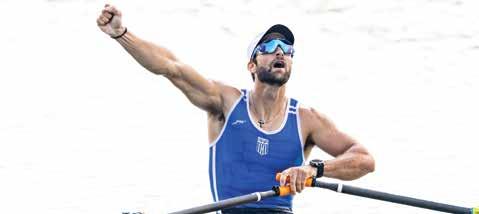

Follow Rowing News on social media by scanning this QR code with your smart phone.

FEATURES
At the world championships in Shanghai, the racing was fierce, the rowing smooth, and The Netherlands showed it has managed its postOlympic transition better than anyone else.
BY MARTIN CROSS
Michelle Sechser World Championships
It’s about love of the sport, love of the journey, and still exciting and fun, says the world champion lightweight who regularly beats larger competitors at the biggest regattas.
BY CHIP DAVIS
DEPARTMENTS
21 QUICK CATCHES
News U.S. Breaks the Streak IRA Returns to Sacramento Winklevosses Make Record Donation Bartman to St. Joe’s
57 TRAINING
Sports Science Training During the Transition Phase Coxing Making the Most of Launch Time Recruiting Why You Should Get Started Early Fuel What to Know About Sport Supplements
Training Calculating Your Hazard Score
Coach Development Coping With Uncertainty
Michelle Sechser | Photo: Lisa Worthy



CHIP DAVIS
An Autumn of Rebirth
Spring is the season of rebirth and renewal (and in rowing the one that really counts), but this autumn has some resurrection vibes, especially with the U.S. National Team—now the Gemini.com National Team, thanks to a $6.5-million dollar gift from U.S. Olympians Cameron and Tyler Winklevoss (page 27).
For the first time since 2019, a U.S. crew crossed the line first at a senior World Rowing Championship.
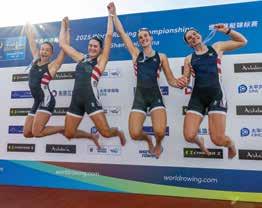
For the first time since 2019, right before the current leadership of USRowing began work, a U.S. crew in late September crossed the line first at a senior World Rowing Championship. The U.S. women’s four broke the 0-for-78 worlds-events losing streak with a powerful gold-medal performance in Shanghai, followed the next day by Michelle Sechser’s win in the lightweight single.
Even at 38 years of age, Sechser shows no signs of being in the autumn of her international competitive career. And despite falling short of two of her biggest goals—to win an Olympic medal, at the Tokyo Games in 2021 and in Paris last summer (Rowing News interview, page 44)— Sechser speaks about rowing with a joy that’s infectious.
In the first year of the quadrennial leading up to the LA 2028 Games (which won’t include lightweight events for the first time since 1992), Sechser gave openweight flat-water sculling a try and says she’ll give Beach Sprints—the contrived Olympic replacement for lightweight events—a try in the years to come.
It’s a new, albeit autumnal, beginning.

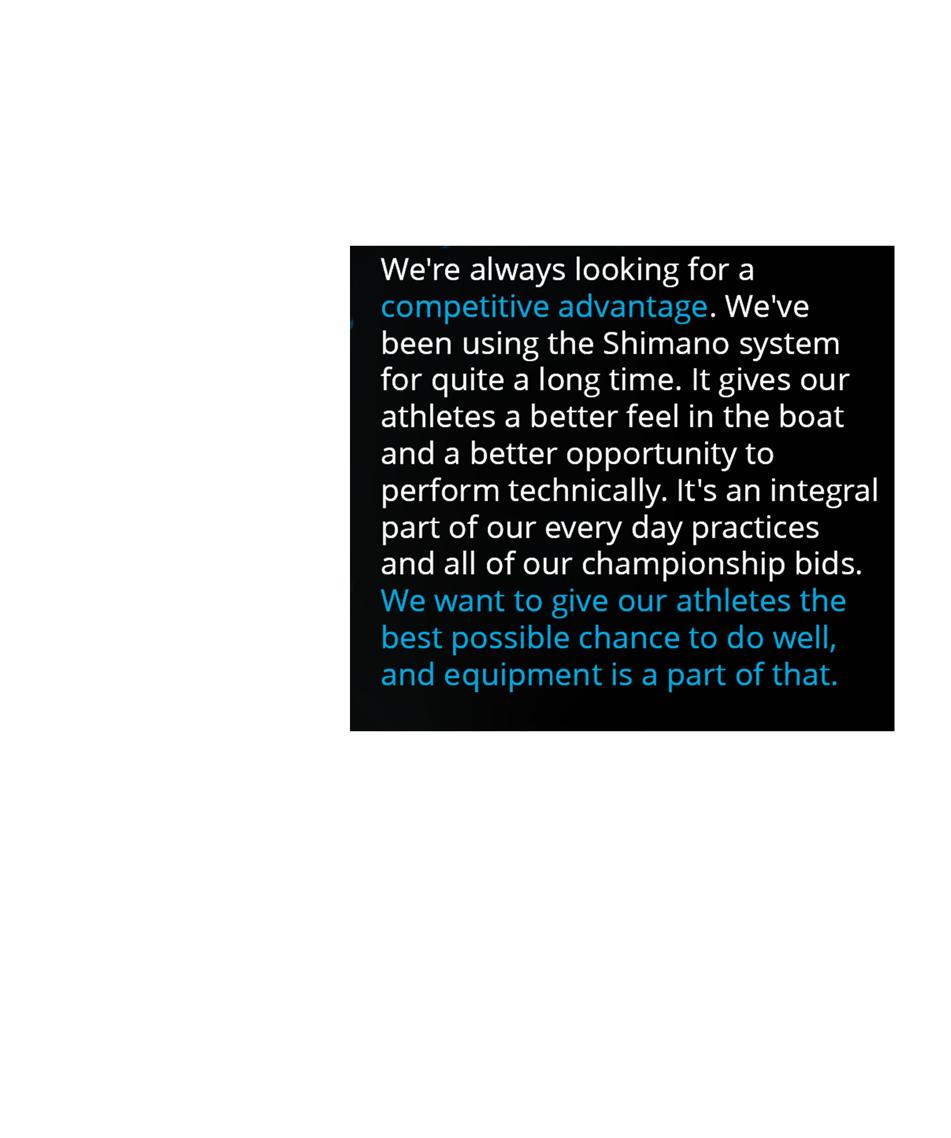


Letters to the Editor can be sent to editor@rowingnews.com
Laughable Lament
It is risible that coaches lament the demise of freshman and novice rowing. Two decades ago, the coaches voted to euthanize it! Four of our 1980 Olympic eight learned to row in college, as well as the cox. By not transforming more mature bodies in college, we face an inefficient trajectory for the future of fast crews in America.
Sean P. Colgan
Lightweight, heavyweight, sweep, and scull U.S. National Team member, 1972-1984 New Zealand
Crab
In my From the Editor piece in the October issue, I mis-counted the number of Olympic and world championship medals Pete Cipollone has won. The correct number is eight.
Chip Davis Publisher & Editor



Independent review of the ActiveSpeed - Sander Roosendaal, founder of the rowing analytics site rowsandall.com, takes a deep dive into the ActiveSpeed. Radley
Large Configurable Display (2, 4 and 6 fields)
Optional Wireless Impeller & Accessories
Easy Data Transfer via the DataFlow App


$445 $495


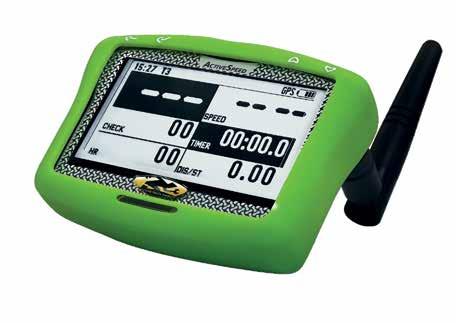




Slava Ukraini
Ukraine’s Anna Sheremet won her first gold in the women’s PR1 single at the 2025 World Rowing Championships. After a disappointing fourth-place finish in rough conditions at the Paris Paralympics, Sheremet won the 2025 European Rowing Championships in the lead-up to Shanghai.
PHOTO: LISA WORTHY
CHASE YOUR GOALS, WE’LL PROVIDE THE COURSE.




Train like champions at Nathan Benderson Park. Recognized as North America’s best rowing venue, NBP provides elite facilities and seamless support—so your team can focus on results.
Benefits
of Training at NBP
• World-class rowing venue in Sarasota, FL
• Perfect training climate, with great weather and calm conditions
• Just 1 mile from I-75 with ample trailer parking
• 550-acre park with trails for walking, running and fitness
• 5 miles from airport, walking distance to shops and dining, minutes from world-renowned beaches



QUICK CATCHES

Breaking the Streak
USRowing ended a five-year gold-medal drought at senior worlds, winning the women’s four and lightweight single.
women’s four highlighted a two-gold, four-medal
Rowing Championships in Shanghai in late September.
The U.S. finished fifth on the medals table, tied with Ireland. Great Britain, China, and The Netherlands topped the table, with three golds each. Romania won two golds and three silvers, including the inaugural running of the mixed eight.
With the victories, USRowing broke a five-year winless streak at senior worlds, with gold medals in the women’s four and lightweight single. The U.S. women’s pair of Jess Thoennes and Holly Drapp won bronze, as did the men’s eight.
“They did a great job, well executed. All credit to the women,” said Josy Verdonkschot, The McLane Family Chief High Performance Officer for USRowing.
The U.S. women’s four of bow Camille Vandermeer, Azja Czajkowski, Teal Cohen, and stroke Kaitlin Knifton trailed the faststarting British and Dutch crews in the first 500, powered through the field to take a length lead in the middle of the race, and then hung on to win the gold, less than a second ahead of Romania in second and New Zealand in third. The Netherlands, Great Britain, and China rounded out the A final.
It had been six years since a U.S. crew last won a senior World Rowing championship event (in the women’s lightweight double and PR3 pair at Linz Ottensheim, Austria, in 2019). The U.S. men’s four won Olympic gold in Paris last summer, but the senior men haven’t won a World Rowing championship gold since 2009 in the men’s coxed pair and 2008 in the men’s
IRA National Championship Returns to Lake Natoma
The 123rd IRA National Championship will be hosted at the Sacramento State Aquatic Center on Lake Natoma, May 29 to 31, 2026, after six years on the East Coast. The IRA regatta is the national championship for Division I lightweight and heavyweight men’s programs, lightweight women’s programs, and Division III men’s programs. “Visit Rancho Cordova and Visit Folsom continue to be valued partners helping our teams procure hotel rooms, facilitating local connections, and providing significant sponsorship to defray referee and staff travel costs,” said IRA commissioner Laura Kenkemueller.
The U.S. women’s four of bow Camille Vandermeer, Azja Czajkowski, Teal Cohen, and stroke Kaitlin Knifton won gold at the 2025 World Rowing Championships.
QUICK CATCHES

BIG NEWS >>> lightweight eight—events canceled by World Rowing since then.
Lightweight single sculler Michelle Sechser added a second gold for the U.S. with the full support of U.S. Olympic rowing boss Josy Verdonkschot, who said he was more than happy to support Sechser in the non-Olympic event.
“She thoroughly enjoyed it,” said Verdonkschot, who believes the team has a responsibility to athletes like Sechser who have given “so much over so many years” to Olympic pursuits. “All credit to her to pull it off.”
The U.S. women’s pair of Washington alumnae Thoennes and Drapp won bronze less than a second back from the French pair and more then 10 seconds ahead of the Italians but more than five seconds behind Romania, whose stroke Simona Radis went on to win another worlds gold in the mixed eight.
After leading the field off the start, stroked by Olympian Pieter Quinton in the same seat, the U.S. men’s eight battled the defending Olympic-champion Brits for second down the course as the Dutch slipped away to a length lead. Great Britain nipped the U.S. at the line for silver, but it was a promising performance for the American big boat, with the rest of the A final field open-water behind.
For coxswain Rachel Rane, it was her first medal at a senior worlds.
“Nobody I’d rather do it with than these guys. I’m grateful,” said the Texas alumna, who won back-to-back NCAA national championships in 2021 and ’22 and gold in the U.S. women’s eight at the 2022 World Rowing Under-23 Championships. “I’m excited to see what’s next.
“We prepare. Everything that gets thrown our way, whether it’s wind or wake,
we turn it into an advantage as much as we can.”
Half of the oarsmen in the U.S. men’s eight were entered also as the U.S. men’s four. In the overwhelming heat and humidity of Shanghai, they backed off their racing efforts in the second half of the B final of the four after failing to make the A final.
Technical difficulties with the boots that hold the bows of boats at the start as well as other delays led to long days on the water in sweltering conditions that Verdonkschot called “a little bit over the edge.” Still, it was a bad look for a U.S. National Team crew at a World Rowing championship. Asked if he was OK with the men’s four shutting down, the normally loquacious Verdonkschot paused and said, “No.”
Many big-boat crews doubled up in the four and eight, something World
The U.S. men’s eight won bronze, less than two-tenths of a second behind Great Britain, and open water ahead of the rest of the field. PHOTO: LISA
Rowing needs to have happen in the Olympic regattas to come, where quotas limit qualification spots to only seven eights and nine fours. With the elimination of repechage heats after the Paris Games, the racing becomes even less compelling to watch, with just three- and four-boat heats in the eights leading to the final, if no one doubles up.
The International Olympic Committee wants medal-awarding A finals on more than just the last two days of the Olympic regatta and full six-lane races in the daily two-hour TV broadcast windows. Combined with the tides that affect the course currently selected for the LA2028 Games, it’s a tall order for World Rowing to figure out a fair and workable regatta schedule.
The women’s eight, featuring a healthy field of 10 entries, provided a preview of what racing could look like at the Los Angeles Olympics if organizers stick to
their announced plan to race 1,500 meters instead of the standard 2,000 because of limitations of the chosen course in Long Beach.
Romania went off at 49 strokes a minute, and the Dutch crew, full of Olympic medalists, raced past it with relatively short, punchy strokes to take an almost length lead after the first 500 meters. Both crews never settled below 40, racing mostly at 42 and 43 strokes per minute and leaving all others—rowing longer strokes at lower ratings—a length or more behind.
Their fifth-place finish duplicated the disappointing fifth at last year’s Paris Olympics.
In preparation for racing a shortened
“This was the year to find new people, some really good.”
—Josy Verdonkschot
Racing in the U.S women’s eight gave seven of the crew their first senior World Rowing championship experiences, as only coxswain Nina Castanga and Charlotte Buck had been there before.
“This was the year to find new people,” Verdonkschot said. “Some really good.”
Olympic distance in 2028—a decision to which USRowing was “not a partner” (Verdonkschot)—an elite-level international regatta will be held on the shorter Olympic course in Long Beach next fall.
The purpose will be to “see what the problems are,” Verdonkschot said, and a follow-up regatta may occur in 2027. Besides the shorter distance, the proposed

The U.S. women’s pair of Washington alumnae Jessica Thoennes and Holly Drapp won bronze.
QUICK CATCHES
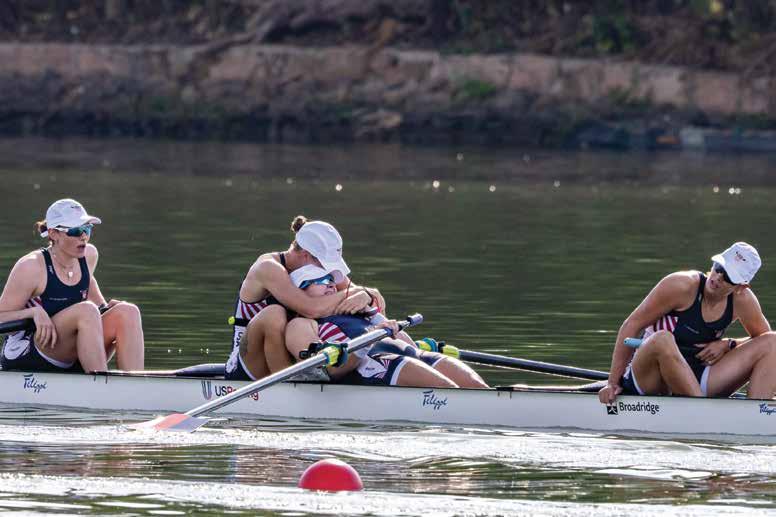
course also experiences tides, with a slack tide for “only a fraction of the day.”
“If it’s not consistent, it’s not fair,” Verdonkschot said, “especially with the new progression system. With the number of boats that participate, it’s one race to decide who goes to the final. No one wants to be working for four years and find out it’s going to be a lottery. The only thing I want is to have fair racing.”
Verdonkschot came to the U.S. preaching the need for more sculling and small-boat rowing in a nation where the eight remains the premier event and almost sole determinant of championships, from scholastic through collegiate rowing. Over the past 30 years (not including this year), the average finish of U.S. National Team senior eights has been silver for the women and fourth for the heavyweight men. For sculling events, only the women’s quad and lightweight double have averaged A final
appearances, both sixth.
The best domestic programs, such as the University of Washington (which traditionally selects fall head-race eights from pairs trials) have trained in pairs and sculling boats for years.
“It’s not perfect but it teaches selfreliance as well as teamwork,” said Washington men’s coach Michael Callahan. The Huskies pick both their Head of the Lake (Seattle) and Head of the Charles lineups using pairs and singles, with top oarsmen rowing in pairs.
“Development guys race singles for lineups in eights and coxed fours,” Callahan said.
Small-boat and sculling events are proving most popular at regattas, such as October’s Benderson Chase at Nathan Benderson Park in Sarasota, where the youth-sculling events drew the biggest fields by far.
In addition to relishing the two golds and a bronze won in Olympic events at this year’s worlds, Verdonkschot is optimistic that as many as 17 Olympians—one third of the Paris squad—will be coming back to compete for spots in the crews that will race in LA2028. Some have taken a year away to heal injuries, to start families, and to complete studies. All will be competing for a place on a team that is the best in the world in two events—for the first time since 2019.
There should be fewer platitudes like “headed in the right direction” and “made more A finals than ever” now that the U.S. women have won worlds golds to go with the men’s Olympic gold and bronze from Paris. The next step is up, to the dominating level of The Netherlands, Great Britain, and Romania, however long and fair the Olympic racecourse is for 2028.
With the gold medals in the women’s four, The U.S. broke a five-year winless streak at senior worlds.
PHOTO: LISA WORTHY.

THE HOME OF ROWING


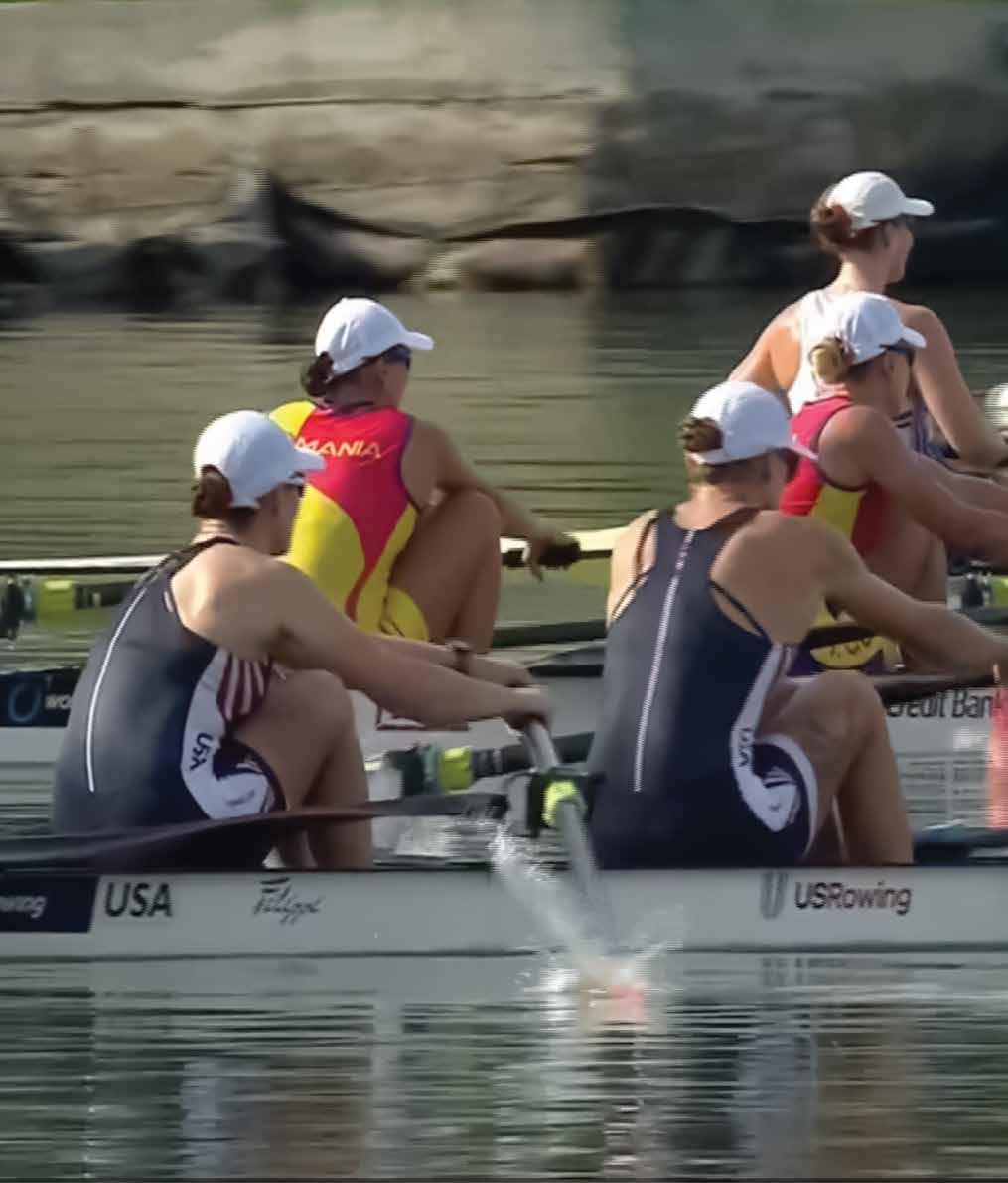

ROBBIE CONSULTING
Helping rowers worldwide get scholarships
Helping high school rowers and families navigate the university recruiting process- Coaches and parent groups reach out to us!
Robbie Consulting will meet your team, coaches and parents at your home club or school. Go to www. robbieconsulting.com to get in touch and schedule a visit
“His assistance was essential to get prepared for such a big step and to get to know the school and team I would compete for.”
www.robbieconsulting.com 1-614-330-2879 • Robbie@robbieconsulting.com
Three-time Olympian Michiel Bartman Will Head St. Joe’s Men’s Rowing
After spending three years as the head coach of Jefferson University women’s rowing, Michiel Bartman—recently named coach of the year in the East Region by the Collegiate Rowing Coaches Association— will remain in Philadelphia, moving upstream to Saint Joseph’s University to become director of rowing and head coach of men’s rowing.
“I’m excited to start a new chapter at SJU,” Bartman said. “Mike Irwin did a fantastic job with the team, culminating with a seventh-place finish in the men’s varsity four at the IRAs earlier this year.”
Bartman replaces former head coach Mike Irwin, who was hired as an assistant coach of the heavyweight men’s team at the United States Naval Academy in Annapolis.
Bartman aims to further the success of the program, he said, by qualifying more of the team for IRAs and taking advantage of the newly allotted qualifying spots at the Dad Vail Regatta.
Age 13 and over


Three gender categories






“SJU’s boathouse and campus facilities are top-notch,” he said, “and the Schuylkill River remains one of the best spots to row and coach in the U.S.”
As an athlete, Bartman represented The Netherlands in three Olympic Games, winning gold in the men’s eight in 1996 (Atlanta), silver in the men’s quadruple sculls in 2000 (Sydney), and silver in the men’s eight in 2004 (Athens). He also captured medals at three separate world championships and from 2002 to 2004 served as chairman of the Dutch National Olympic Athletes Committee. KATIE LANE

Winklevoss Twins Give $6.5 Million to U.S. National Team
Cameron and Tyler Winklevoss have made a record $6.5-million donation to USRowing to support the U.S. National Team— renamed the Gemini.com U.S. National Team—through the LA2028 Olympic and Paralympic Games. It’s the largest gift ever received by the United States Rowing Association (USRowing).
The Caspersen Boat House at the training center on Mercer Lake in West Windsor, N.J., will be expanded, and the new facility will be named the Winklevoss Training Center.
“This is really substantial,” said USRowing Olympic boss Josy Verdonkschot, The McLane Family Chief High Performance Officer. “This extraordinary contribution provides the
foundation to further professionalize and elevate our high-performance environment.”
The Winklevoss twins began rowing at Saugatuck Rowing Club, coached by James Mangan, before heading to Harvard, where they rowed in Harry Parker’s heavyweight program.
At the Beijing Olympics in 2008, the brothers, coached by Ted Nash, raced in the grand final of the men’s pair, the pinnacle of their nearly decade-long U.S. National Team careers. They went on to found the crypto currency platform Gemini and Winklevoss Capital.
“Rowing has taught us some of the most valuable life lessons,” Cameron Winklevoss said. “So we’re passionate about increasing access to the sport and cementing its future in the United States.”
Dartmouth Names Gordon Getsinger Associate Head Coach of Women’s Rowing
Getsinger returns to the Northeast after a successful five-year run with the University of Washington Huskies.
Gordon Getsinger is the new associate head coach of women’s rowing at Dartmouth.
Getsinger returns to the Northeast after a successful five-year run as an assistant coach and lead recruiter with the University of Washington Huskies. He coached the second varsity eight to a gold medal at the 2025 Big 10 Conference Championships and a silver medal at the 2025 NCAA National Championships, helping the Huskies finish fourth overall in the nation.
“I’m grateful for my time in Seattle and honored to have worked with head coach Yaz Farooq and the women of Washington,” Getsinger said.
“This move makes a lot of sense to me. I am very excited to join Dartmouth women’s rowing, building on the program’s incredible momentum under head coach John Graves, while reconnecting my family with our Northeast roots.”
Before going to Washington, Getsinger built Saugatuck Rowing into one of the most successful junior programs in the country, winning five consecutive titles at Head of the Charles and the USRowing Youth National Championships in the women’s eight from 2014 to 2019.
Cameron and Tyler Winklevoss raced in the A final of the 2008 Beijing Olympics.
QUICK CATCHES
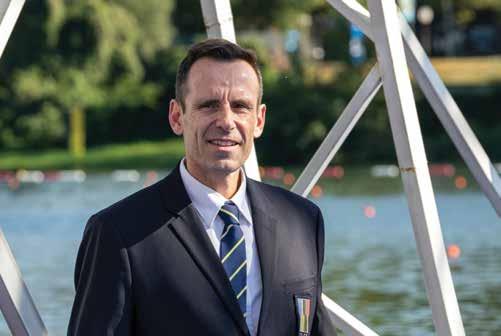
Jean-Christophe Rolland Re-elected to a Fourth Term
He cited the need to adapt to change and vowed to broaden rowing’s reach, enhance its image, and diversify sources of revenue.
Olympian Jean-Christophe Rolland president of World Rowing, the sport’s international governing body, since 2013– was re-elected unanimously.
“I am deeply honored to be re-elected to serve as president of World Rowing,” Rolland said. “Serving our sport is my only ambition, and it is a privilege to lead our organization for another four years, working with our members, athletes, and partners to continue shaping the future of rowing.
“I am proud of what we have achieved and I look forward to building on this momentum together and continuing to respect strictly the values of Olympism and our sport.”
The “ever challenging world of sport” calls for an even stronger foundation and ability to adapt to change, Rolland said. The work World Rowing has done, and continues to do, is aimed at securing
rowing’s future by broadening its reach, enhancing its image, and diversifying sources of revenue.
Rolland listed ways rowing has changed and adapted already— the introduction of mixed boats at World Rowing events, the revision of the progression system for classic rowing events, and the development of coastal and indoor rowing contests.
“These changes, supported by a strong consensus within our community, demonstrate our readiness to adapt to a dynamic world, while safeguarding our sport’s essential values.”
The 2025 election occurred at the World Rowing Ordinary Congress in Shanghai after the World Rowing championships. Elections were held also for vice president (Annamarie Phelps of Great Britain) and treasurer (Gerritjan Eggenkamp of The Netherlands).
KATIE LANE
Shanghai Sprints Will Debut in 2026
The new event will culminate the annual Head of Shanghai River Regatta, and winning athletes will receive cash prizes.
The Shanghai Sprints, a knockoutstyle rowing competition conducted over 500 meters, will welcome 88 athletes from the best teams in the world next September in Shanghai.
“Shanghai has a rich connection to our sport,” said World Rowing President JeanChristophe Rolland, who called the recent world championships there “a landmark success.”
“This new event will both celebrate and strengthen that relationship while creating a spectacular new stage for the world’s best rowers and enabling a recurring showcase of our sport at the highest levels.”
Shanghai will host the event through 2030 on a spectator-friendly waterway that runs through the heart of the city.
The Shanghai Sprints joins a small number of on-the-water short-sprint rowing events, such as Beach Sprints and coastal rowing. Typically, 500-meter sprint races occur at indoor competitions, such as the World Rowing indoor championships, or are part of a larger event like the Royal Canadian Henley Regatta or exhibition races like the Gold Cup Regatta.
The event will culminate the annual Head of Shanghai River Regatta and be staged by the Shanghai Administration of Sports, the Donghao Lansheng Group (organizers of the recent World Rowing championships and the annual Shanghai Marathon), and the Chinese Rowing Association. The Sprints will cover travel, lodging, and participation costs for athletes who attend and award cash prizes to top performers.
World Rowing said the new event highlights its commitment to innovation and expanding the global presence of the sport.
KATIE LANE
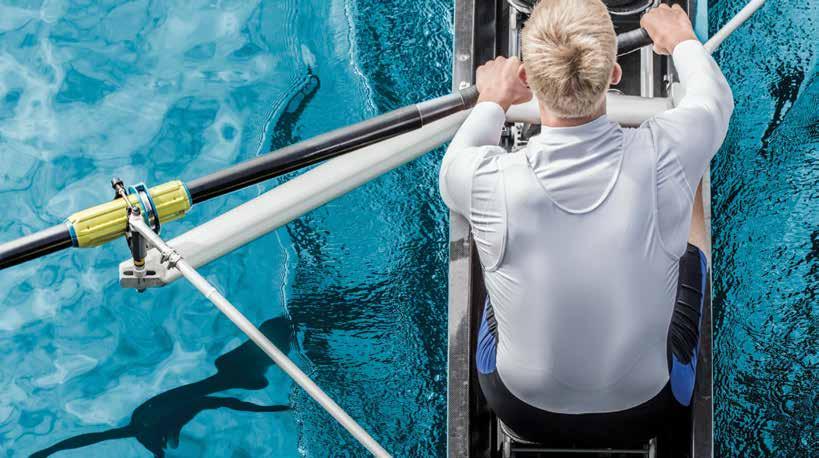




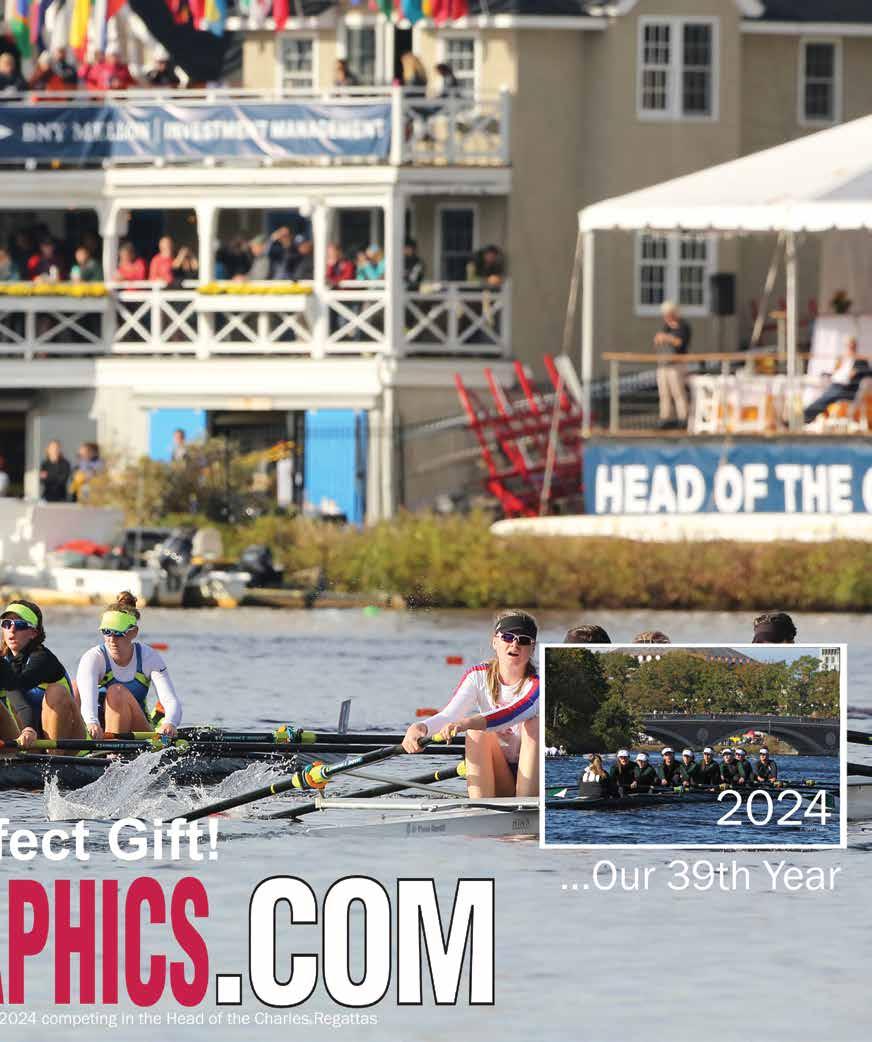
Double Dutch Delight
At the world championships in Shanghai, the racing was fierce, the rowing smooth, and The Netherlands showed it has managed its post-Olympic transition better than anyone else.
STORY BY MARTIN CROSS
PHOTOS BY LISA WORTHY
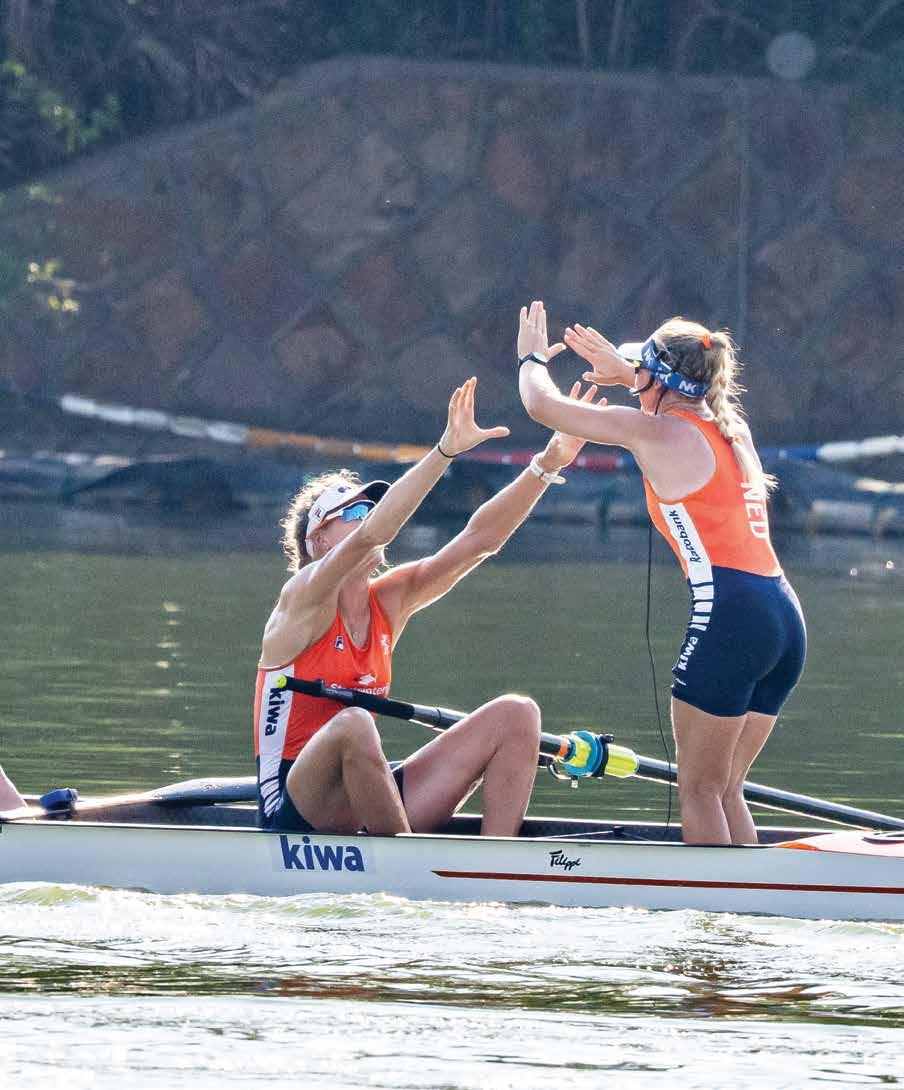
The Dutch women won their first-ever senior worlds gold in the women’s eight in Shanghai.
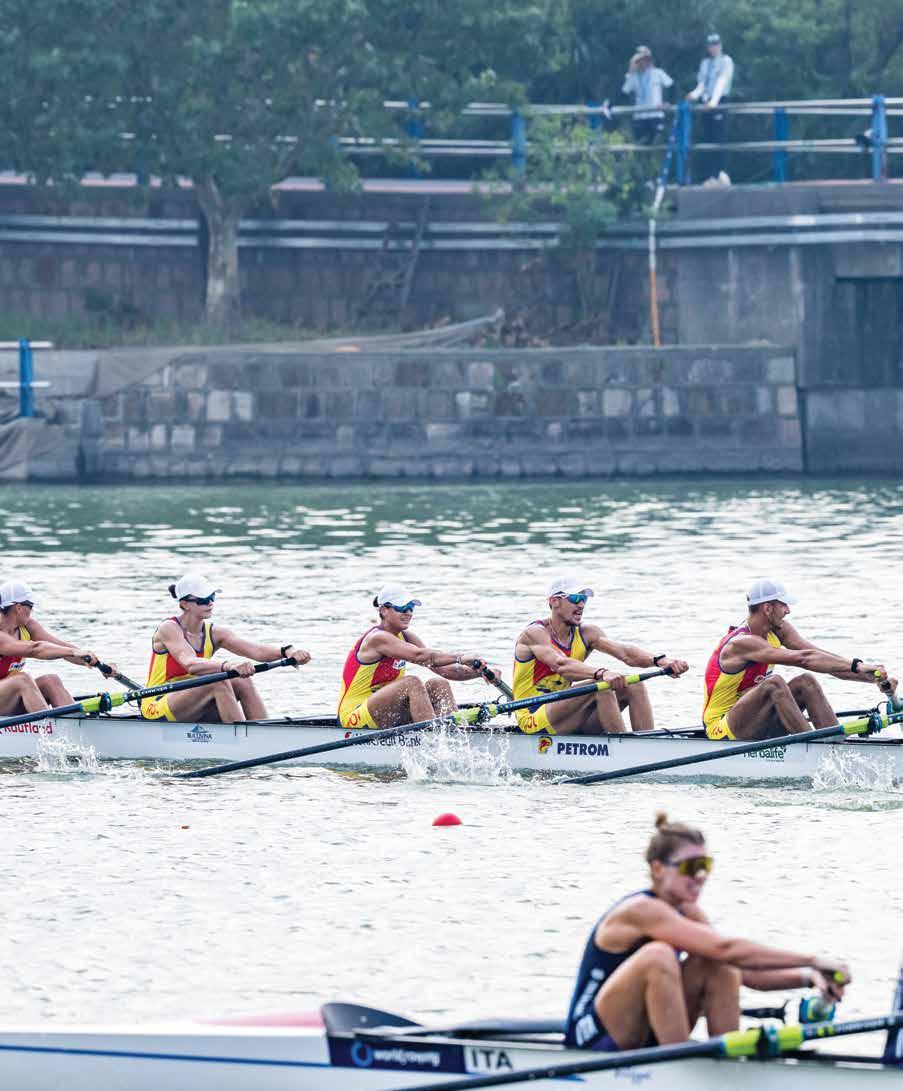
In the Romanian mixed eight, two-seat Maria Lehaci and fourseat Florin Lehaci, who are married, won gold and also took home silvers from the women’s eight and men’s pair.
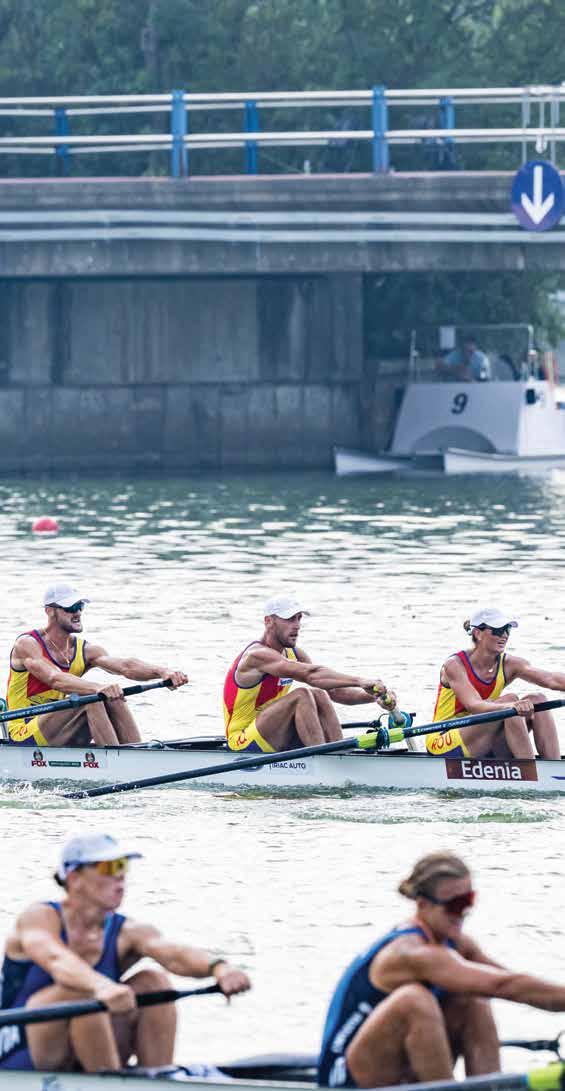
This was a championship for the ages. Not because of the crowds (most of the grandstands were thinly filled). Or the weather, which was blisteringly hot and savagely humid, creating real problems for athletes and coaches (though the latter may have benefited the best-prepared teams).
No, this was an event packed full of some of the best racing, the smoothest rowing and sculling, at a venue that was Olympic quality. Having been to most worlds since 1974, I’m trying to remember a better championship and, to be honest, I’m struggling.
With that in mind, it’s hard to know what to turn to first. If you watched them, you won’t be surprised that I’m going to pick the men’s and women’s singles. Lauren Henry had been sensational throughout the season. The British Olympic quads champion had dispatched all her opponents, while posting stunning times.
Even when she was unwell at Lucerne, the 23-year-old still won. But with her second-half tactics well known to her opponents and a decent gap between Lucerne and worlds, the chance was there for someone to lead out and stay in front.
Ireland’s Fiona Murtagh was that person. Her wily coach, Dominic Casey, with a hatful of Olympic medals and a fearsome belief in Murtagh’s potential, was the person who stoked her confidence. The 30-year-old Galway native led by a street at the K. Moreover, Henry’s customary third quarter seemed to make no impression. But then the fireworks began. Henry, uncharacteristically looking around, turned in a sensational sprint. It failed by just three one-hundredths of a second. A new rivalry has been born in our sport.
The men’s singles was even better, maybe because till late on the medals were contested by four athletes. Oli Zeidler led out (no surprise there) but the 2024 Olympic champion did not dominate. Instead, his nemesis from the Tokyo Games, Stefanos Ntouskos, stayed close. The former lightweight’s amazing coach, the Italian Gianni Postiglione, had, for a change, experienced an injury-free run into the championships. That allowed the Tokyo gold medalist to stay close through the K.
Ntouskos’s technique was strikingly different from that of his rivals. The Greek sculled with his exaggerated body rock and powerful finish. In the final quarter, Simon Van Dorp, the University


The Dutch women’s eight raced high and hard, with nearperfect blade work, to outdistance Romania in the final.
of Washington Husky, was there pushing his bow level with Zeidler and the Greek. But with just 250 meters to go, the Dutch sculler began to run out of juice.
As Ntouskos hit the front again, Zeidler found a sprint from nowhere and began to charge. The neutral athlete, Yauheni Zalaty, always a great sprinter, was there, too. On the line, it was the 28-yearold Ntouskos, with Zeidler in second, and Zalaty picking off the fading Van Dorp. It was a sensational race.
Could it get any better? The answer was an emphatic yes. Picture this: two Shanghai natives, both Olympic champions at Tokyo in the quad. They’d won the women’s doubles in both World Rowing Cups this season. For Chen Yunxia and Zhang Ling, this was meant to be “their” championships. Up against them: The Netherlands double that had been rowed down crushingly by the diminutive Greeks at Henley.
Rose de Jong in the bow seat had also lost the Olympic quad’s gold on the last stroke in Paris. These two crews rowed the whole course with no more than threetenths of a second separating them through any mark. To say it was compelling would be an understatement. In the end, de Jong and Benthe Boonstra found something to snatch a narrow victory over the hometown favorites. We were speechless!
Then what about the men’s quad? The flamboyant and sometimes unpredictable Italians, led by their talismanic stroke Giacomo Gentile, were up against the reliable British with their turbocharged third quarter. It had seen the rest of the world off in Lucerne, but not the Italians, who chose not to race there.
In the final, the Italians were sculling beautifully, with so much synchronicity that it almost took your breath away. At 500 meters, they had clear water on the British and extended that by the K. Into the third quarter, it was game on. The British were coming … except they weren’t. The fabled British third quarter never materialized, and the Italians never let up. Italy took gold at a worlds for the first time since 2018.
If the Italian quad was one contender for crew of the championships, then another must have been the British men’s four. Rumors abounded that they’d gone sub 5:40 for 2K in training. So in Shanghai, the three Cambridge oarsmen in the stern and Dan Graham, from Caversham squad, looked like they had taken the sport to
another level. They won–looking long, easy, and effortless—by a length over Romania. Credit should go to their coach, Paul Stannard, though for most of the season the light-blue oarsmen were coached by Rob Baker. The Cambridge chief coach must now be ranked up there with the world’s best coaches. In addition to that, the former Harvard Crimson rower Douwe de Graf, who anchored the boat from the three-seat, must be ranked now as MVP of the British team. The fabled Sinkovic brothers, triple Olympic champions, had to be content with the B final.
The U.S. women’s four was outstanding, too. Jesse Foglia, their coach, had helped them build a solid if unspectacular first quarter. But when they passed the 500-meter mark, the fireworks began. They rowed a blistering second and third quarter, which made them untouchable. Even the multi-Olympic champion crew from Romania couldn’t get close.
The Longhorn/Husky combo in the stern of Kate Knifton and Teal Cohen was phenomenal. The fact that both hailed from the Lone Star State was icing on the cake. Moreover, their victory laid to rest the relative underperformance of the U.S. women in Paris and represented a triumph for coach Josy Verdonkschot.
The former Dutch women’s coach must have had mixed feelings when he saw some of his former athletes in the Dutch women’s eight take a clear-water lead in the first quarter over not just the Romanian Olympic champions (who had dominated in Paris) but also the new U.S. crew, which had hoped for more.
It was a joyous rip-roaring row from The Netherlands eight, who rarely dropped below 42. They won by clear water. The fact they moved so fluidly and easily enabled them to maintain their high rating— beautiful catches, a powerful middle, and an easy, clean finish. And soon we were in for double Dutch delight.
The evidence that the Dutch had managed their post-Olympic transition better than any other team came when the men’s eight stormed down the course with the same pulsating high-rating style. For once, it gave them a clear-water victory over their archrivals from Britain. And the fact that the guys from The Netherlands looked like they had loads of fun throughout the season did not go unnoticed.
In the same final, the U.S. men’s eight rowed a storming race. Those that had
seen the fatigue of the men’s four in the early rounds of the regatta may well have questioned Verdonkschot’s decision to make the four double up into the eight. But all questions were answered when the crew, led by the Olympian Pieter Quinton and debutant Gus Rodriguez, posted a stunning third 500 meters to nearly catch the British napping. Their bronze medal was a towering achievement and reflected well on their great coaching team of Casey Galvanek and Brian de Regt.
The athlete of the championships was undoubtedly Romania’s Simona Radis. To be fair, the double Olympic champion was already the world’s No. 1 female oarswoman. That looked unlikely to change when she and her new partner, MariaMagdalena Rusu, bossed the women’s pairs—although, in the first 1,000 meters, it seemed a new contender might be emerging as Hezekia Peron, a relatively unknown Frenchwoman from the Dordogne, showed that she was not awed by Romania. Silver was a brilliant bonus for the 20-year-old future French star. Americans Jess Thoeness and Holly Drapp rowed through the field to beat the fancied Italians for bronze.
What made Radis sensational on the water at Shanghai was the way she stroked the Romanian mixed eight. They were simply untouchable, and much of that stemmed from Radis’s leadership. At the finish, the 26-year-old had a margin of over five seconds on the Italian crew. Moreover, she and her crew mates posted the phenomenal time of 5:34. As if that wasn’t enough, the Romanian’s boat contained the first ever husband and wife, Maria and Florin Lehaci, to win a world gold medal together.
This new event was a riotous success, as were the mixed doubles, won by Ireland. On this evidence, the mixed eights look certain to make an Olympic appearance in the Brisbane Games of 2032. Tellingly, the crews seemed happy to row their eights with little training beforehand. In doing so, it seemed they caught the zeitgeist of what was an important departure for the sport.
Another crew that caught the mood of the championship was the Dutch women’s quad. Their stroke, Tessa Dullemans, was also in the crew that had been rowed through on the line by the British. And the Olympic champions had two returners from their Paris boat on board. Added to that, the British had a powerhouse in the stroke seat, Becky Wilde, who took a bronze in Paris, too.
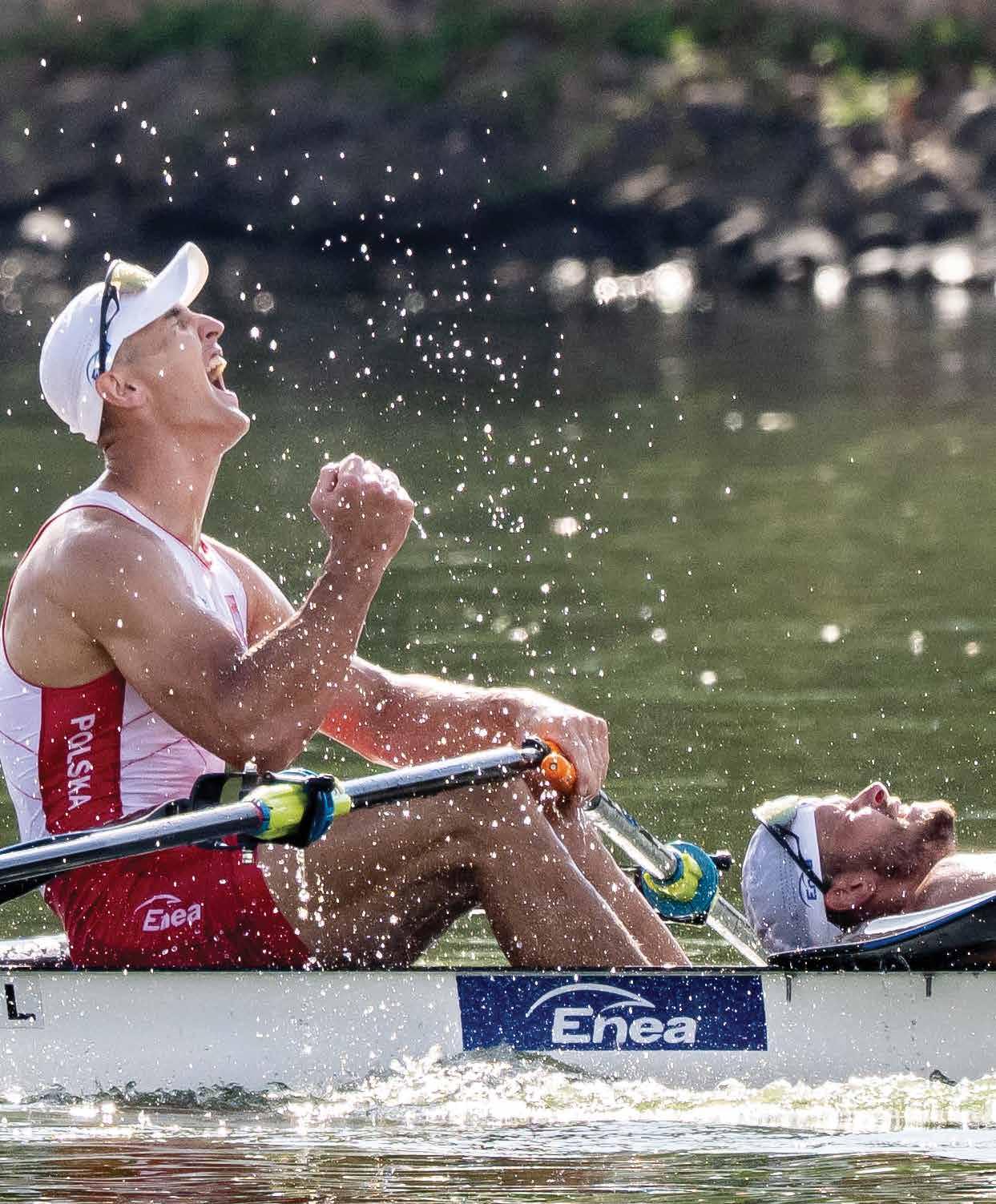
Poland’s men’s double sculls of Miroslaw Zietarski and Mateusz Biskup won gold.
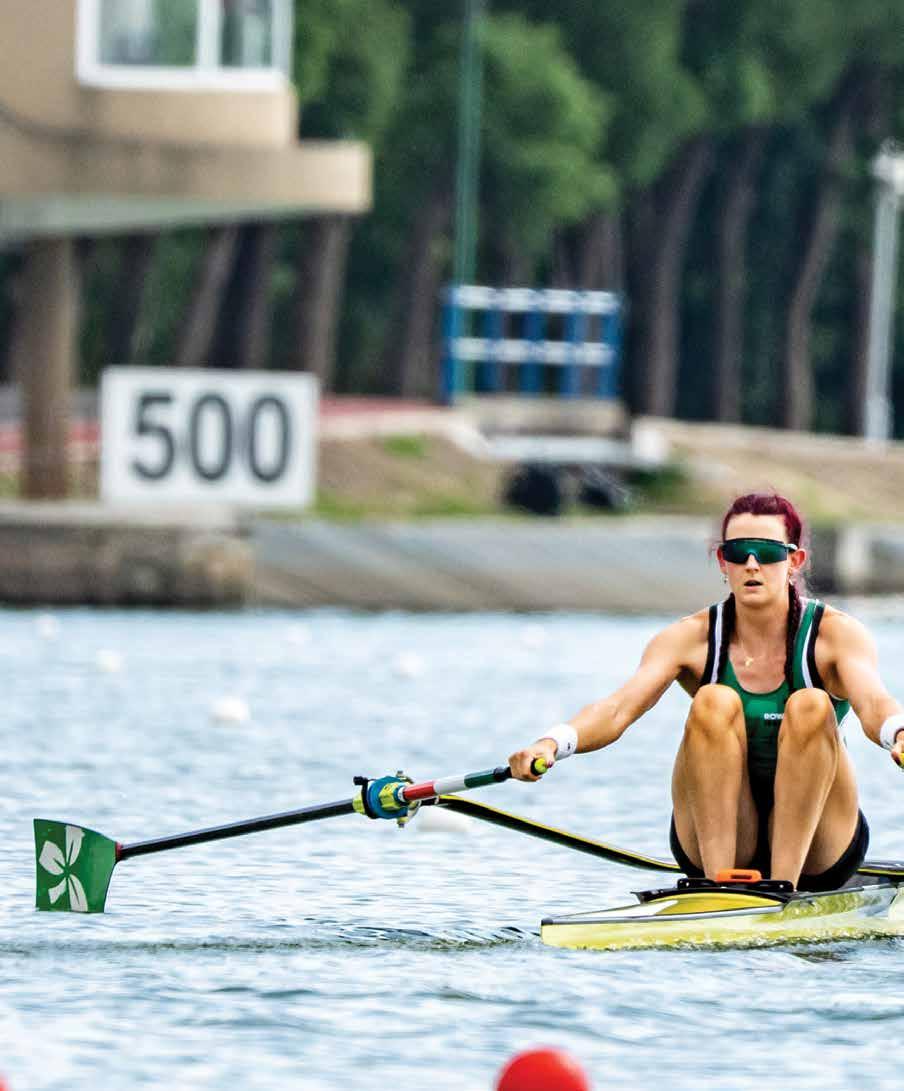

Fiona Murtagh defeated Great Britain’s Lauren Henry by just .03 seconds to win the world title..
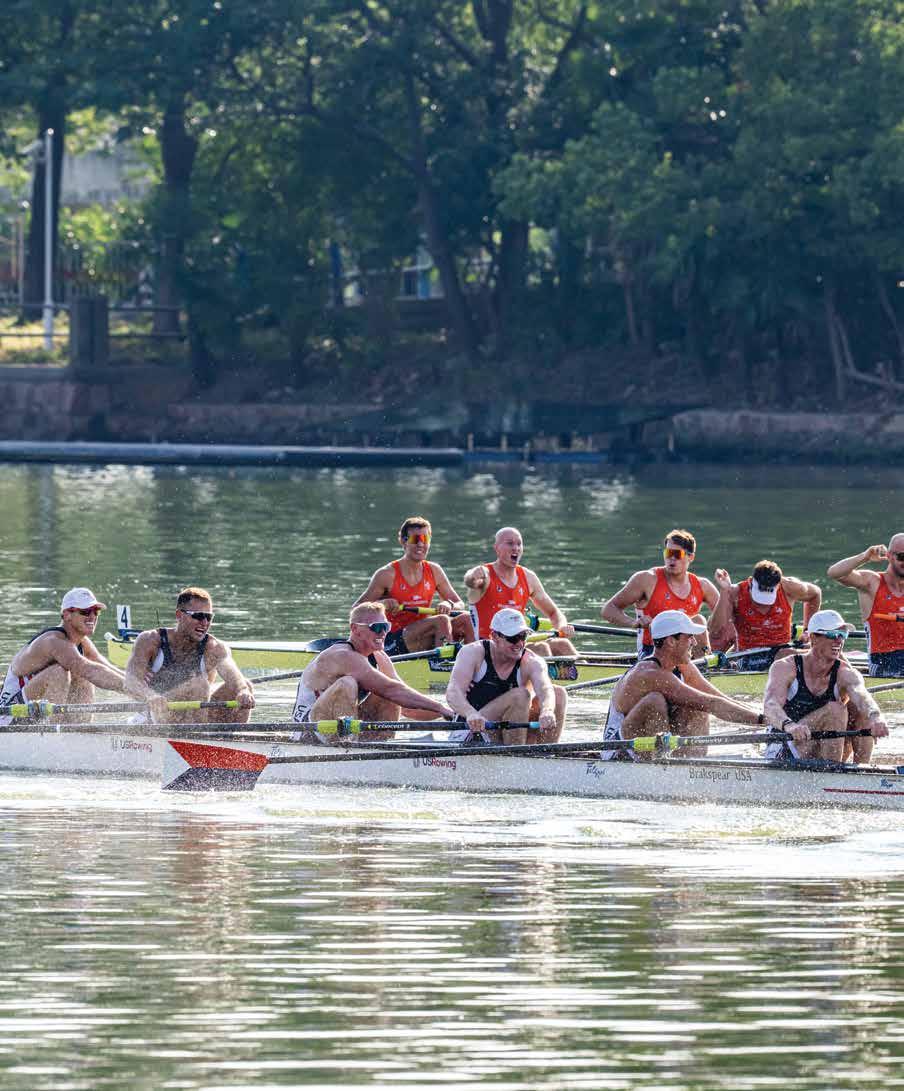
The U.S. and British men’s eights were they only two which could maintain overlap with the victorious Dutch men.

By now, you’ve probably guessed what The Netherland’s strategy might have been: front-load the first half of the race and trust that superlative technique would see them home. This time, there was no fairy-tale ending for the Brits, who took a well-deserved silver after a season blighted by injury and illness. The celebrations were sweet for Dullemans & Co.
You also had to admire the sheer audacity of the Polish federation’s selection policy. They took the two powerhouses out of their fancied quad: Miroslaw Zietarski and Mateusz Bisksup. It was a gamble, but they trusted that the two men who had finished sixth in the Tokyo doubles final would reprise the speed they had shown in the European championships.
The men’s doubles looked like an absolutely stacked event, but in the final, the men from Bydgosz and Gdansk repaid their federation’s trust by dominating the field in the first 1,500. Nik Pimenov and Martin Mackovic from Serbia closed fast at the finish, but Mackovic, a former Cal Golden Bear, couldn’t quite get his bow in front of the tiring Poles.
While the Poles, at 32 and 31, may be moving toward veteran status, it was a youngster from New Zealand, Oli Welch, who looked stunning in the men’s pair. The 22-year-old was rowing at bow behind the 25-year-old Ben Taylor. Such was their dominance—ahead of Romania and Switzerland they won by a shade under five seconds—that it was tempting to wonder whether a new Kiwi pair had been launched. OK, so they’ve got a lot to do to rival the feats of Eric Murray and Hamish Bond, but Shanghai was a start.
Michelle Sechser, who has evolved from youngster to evergreen, took gold in the lightweight singles. But the 38-year-old had to hold off an incredible sprint from the Chinese sculler Pan Dandan. The noise from the excited Chinese TV announcers nearly drowned out our own TV remarks that afternoon. Still, the Californian held on for a famous victory.
The men’s lightweight singles went to the Uruguayan Felipe Kluver Ferreira. His Tokyo lightweight doubles teammate, Bruno Cetralo Berriolo, excelled, too. The self-styled “Montevideo Butcher” (when he played soccer, the ball might get past him but not the man) made the A final of the men’s singles. A great result for Latin America.
Although the lightweight doubles were disappointing in terms of entries—just
four contested the men’s event—they were valuable in providing a space for developing nations like Indonesia, Peru. and Tunisia. The first two of those crews won medals.
The Para boats produced some outstanding performances. The 24-year-old Anna Sheremet shrugged off worries of the conflict in Ukraine to take her first gold medal at this level. In the men’s edition, Britain’s Ben Pritchard blasted out and aimed to hang on. The 2024 Paralympic champion was hanging on indeed— barely—in the final quarter and looking for the red buoys with 350 meters still to go. At the finish, he managed to stay ahead of Ukraine’s Roman Polianskyi and the evergreen Aussie Eric Horrie.
In the PR3 mixed double, Germany set a new record, with stroke survivor Katerin Marchand and her partner, Valentin Luz, destroying the world’s best time. China took the PR2 mixed double, and it was a familiar story in the PR 3 coxed four, with Britain winning another gold. In the past, the USA four had challenged the British for the gold, but this time the Germans, with Marchand doubling up in the bow, vanquished the American crew, which slipped back to fourth. China, racing in a stern-coxed boat, took silver.
The championships had begun with a spectacular opening ceremony that featured a robot rower and the mayor of Shanghai (his presence a big deal in this part of the world). They closed with an innovative medal ceremony in the heart of Shanghai. It was an appetizer for World Rowing’s forthcoming sprint events, which will be held in the center of the south China city next year.
Yes, rowing will be coming back to Shanghai, and it’s no surprise. We loved it!
MARTIN CROSS is World Rowing’s race commentator. For over 18 years, he rowed for Britain, earning Olympic gold and bronze medals. He has provided expert commentary at six Olympic Games. He coaches rowing at Hampton School in London and interviews rowers and coaches on his Crossy’s Corner YouTube channel.
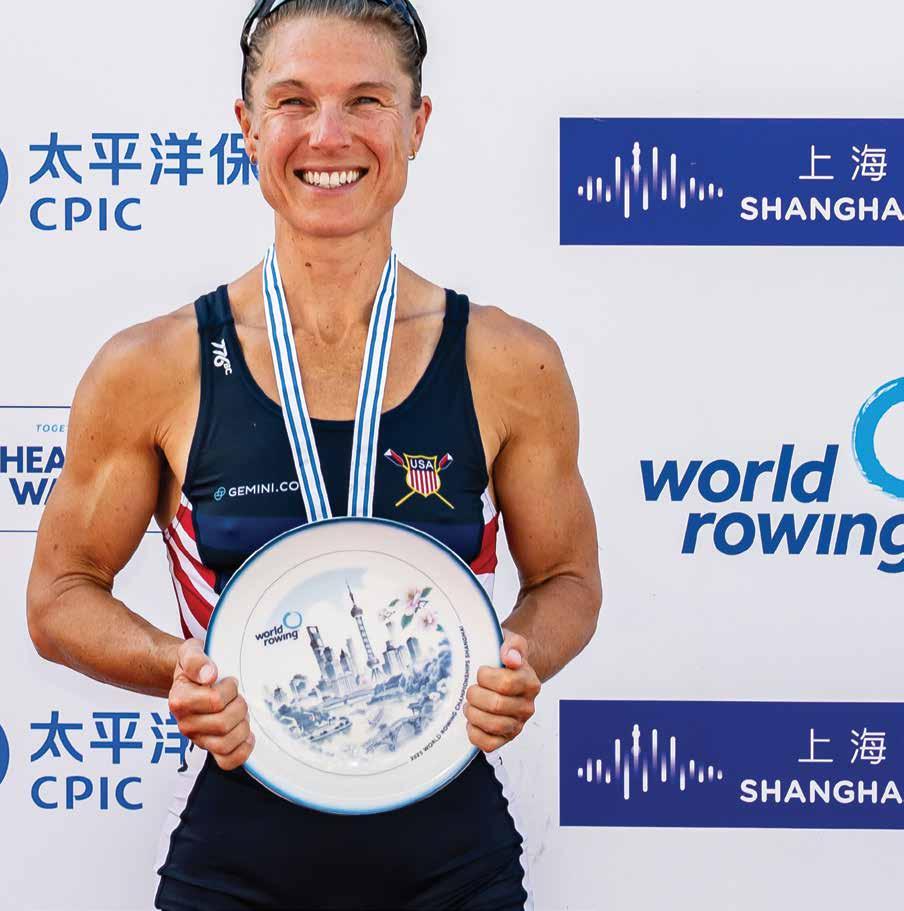
THE
INTERVIEW
MICHELLE SECHSER
IT’S ABOUT LOVE OF THE SPORT, LOVE OF THE JOURNEY, AND STILL EXCITING AND FUN, SAYS THE WORLD CHAMPION LIGHTWEIGHT WHO REGULARLY BEATS LARGER COMPETITORS AT THE BIGGEST REGATTAS.
INTERVIEW BY CHIP DAVIS PHOTOS BY LISA WORTHY

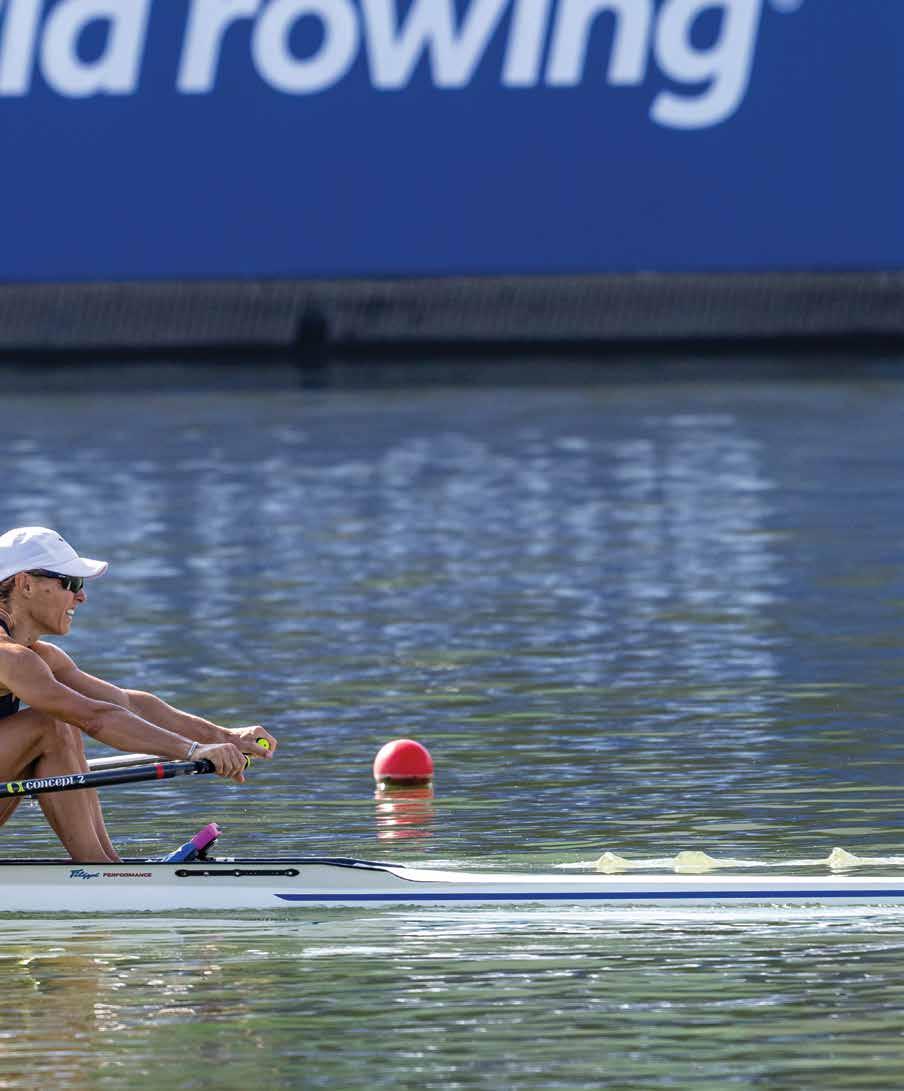

It’s hard to take a picture of Michelle Sechser in which she’s not smiling. The 38-year-old current world champion in the women’s lightweight single has raced on 13 U.S. National Teams, competed in two Olympics, and found joy throughout it all—whether the final race ended in disappointment or on the awards podium.
At 5-foot-5 and 127 pounds, she’s a natural lightweight who regularly beats larger competitors—some almost a foot taller—at the world’s biggest and most prestigious regattas, including the Head of the Charles and Henley Royal Regatta. She’s a record holder on the erg and was USRowing’s Female Athlete of the Year for 2022.
Her rowing career may have begun inauspiciously—she couldn’t complete a one-mile run without walking—but through commitment, perseverance, and faith in herself, Sechser has achieved heights that have surprised even her, and there’s no indication it’s going to end any time soon.
Rowing News caught up with Sechser as she was getting off the Charles River after a training session two weeks after winning at the World Rowing Championships in Shanghai. The twotime defending champion in the Head of the Charles openweight singles event was preparing to race against reigning Olympic champion single sculler Karolien Florijn and reigning world champion openweight single sculler Fiona Murtaugh at the Head of the Charles.
Rowing News: You raced on your first senior U.S. National Team in 2012 and since then you’ve represented the U.S. in two Olympics, won World Rowing Cup medals, and won both Henley Royal Regatta and the Head of the Charles in openweight events. How does it feel now that you’ve collected “the whole set” of medals, with a gold to go with your bronze and silvers?
Oh my gosh, even hearing you say that, and list those races, it doesn’t feel real to me, to be honest. When I’m out there racing, when I’m there on the start line in Shanghai, it still feels just as exciting and fun and nerve-racking as it did when I first did it in 2012.
What has kept me in this sport for so long is just a pure love of the sport, love of the journey, and what it’s like to set a huge goal that maybe scares you a little bit but you know is within reach if you can really execute well on the day. And just a pure love of what it’s like to have a great coach and great teammates who are pushing with you, holding you accountable, and encouraging you to break through some barriers that you’ve maybe seen before.
The main thing is it’s never gotten old. Every race feels so different and so new because the circumstances are always different, or I’m different, or your fitness is different or your boat lineup is different. It’s just been such an incredible experience to get to see so many different sides of rowing, like all the races you just listed— Henley Royal Regatta as its own beautiful beast of dual racing; World Rowing Cups, you never quite know what you’re gonna
get in the field, based on people’s training peaks from other countries; the Olympics, obviously everyone’s all-in, no holds barred. Each one is so special and different and unique that it’s made for some really great moments
Rowing News: What would you tell a teenage you if you could go back in time?
There’s so much I would want to go back and tell a young teenage Michelle. The biggest one would be to not be afraid, to dream big, like really big.
I remember my novice year in high school, I started rowing at Capital Crew [Sacramento, Calif.], and our coach sent us on a one-mile warm-up run, and I could not run the full mile without walking. If I sat down with that girl and told her all the accolades that you just listed, she wouldn’t believe it. She would laugh. She would cry. She’d think it was a joke.
I wish there was a way to go back and tell her that it’s all possible, to tell other young girls that [the goals] are scary and they’re daunting, but don’t be afraid to dream because it all can be achievable. And even if it’s not, even the goals that I’ve come up short on—for example, winning an Olympic medal—it has been so worthwhile to chase those dreams.
People say it like it’s silly, “the journey is what matters.” But the pursuit is what matters. It’s hard to tell that to supercompetitive people who are trying to win Olympic medals because that’s not what matters, right? The Olympic medal is what matters. But even the goals that I’ve come

up short on—Tokyo and Paris—it has been so rewarding.
You become a different person when you set a goal like winning an Olympic medal. When you stay committed to it on the hard days, when you’ve got a tough coach and good teammates pushing you toward that goal month after month, year after year, when you dig deep in a training session and find out what you’re really made of — all those experiences make it so worthwhile. Don’t be afraid to chase those goals, because even if you come up short, it’s so worthwhile and it changes you. It changes you in so many ways..
Rowing News: Now that you’ve won a medal of every color and the Olympics cut lightweight rowing, will you go on to Beach Sprints, to openweight racing? What’s next?
Yes, to be honest, I would actually like to try both. I did try. I did go to the openweight selection camp this summer in Princeton. I would’ve loved to have made the women’s double. I love the double. I’ve had good experiences in the double. Molly Reckford [Sechser’s Olympic partner] and I have been able to go 6:40 in the double. I was hoping, with that skill set and speed, I’d be able to show them in camp. I just came up a little bit short against the team that’s in the group this year. I would like to try one more time to see if I can. I’d like to be a valuable member to the U.S. sculling team to make one of those boat classes go real fast.
I would also like to try Beach Sprints. Unfortunately, I haven’t been able to attend any of the camps that USRowing has had so far.
It’s fun to see that the Head of Charles had their Beach Sprints, and there are new small regattas up here in New England and down in Long Beach [California] that are popping up. While I am very, very sad that that is what has replaced lightweight rowing [in the Olympic program], it is appealing and it does look like everyone’s having a lot of fun trying it, so I would like also to take a swing at that.
Home for me is Portsmouth, New Hampshire, so I’ve had the opportunity to do a good bit of ocean rowing. I’ll try to learn the sport a little bit more and work on some sand sprints and see if I can make a go of it.

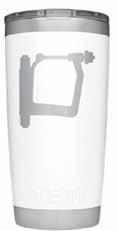


NECK BUFF
2-layer neck gaiters will protect you throughout the seasons. Stretchguard fabric with extreme 4-way stretch for optimal comfort. Super soft, silky feel that is lightweight and breathable. 100% performance fabric, washable and reusable.
$20



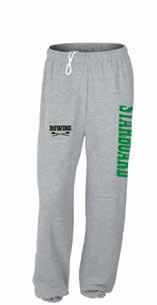


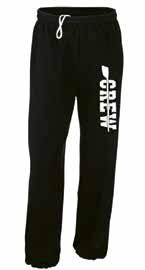
PERFORMANCE FABRIC SHIRTS
ALL AVAILABLE WITH YOUR TEAM LOGO AT NO EXTRA CHARGE (MINIMUM 12)
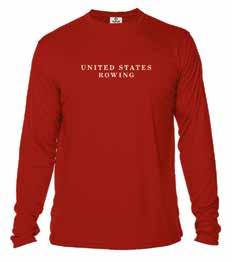
UNITED STATES ROWING UV
VAPOR LONG SLEEVE $40
WHITE/OARLOCK ON BACK
NAVY/CROSSED OARS ON BACK
RED/CROSSED OARS ON BACK
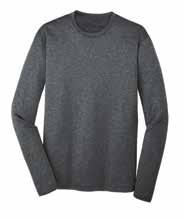
PERFORMANCE LONG SLEEVES

PERFORMANCE T-SHIRTS
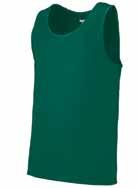
PERFORMANCE TANKS
TEAM SALES
Order any 12 performance shirts, hooded sweatshirts, or sweatpants and email your logo to teamorders@rowingcatalog.com and get your items with your logo at no additional cost!


SWEATPANTS
HOODED SWEATSHIRTS

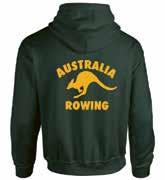



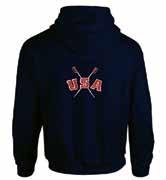
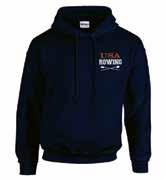



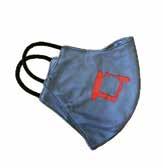
IRELAND ROWING
CANADA ROWING
AUSTRALIA ROWING GERMANY

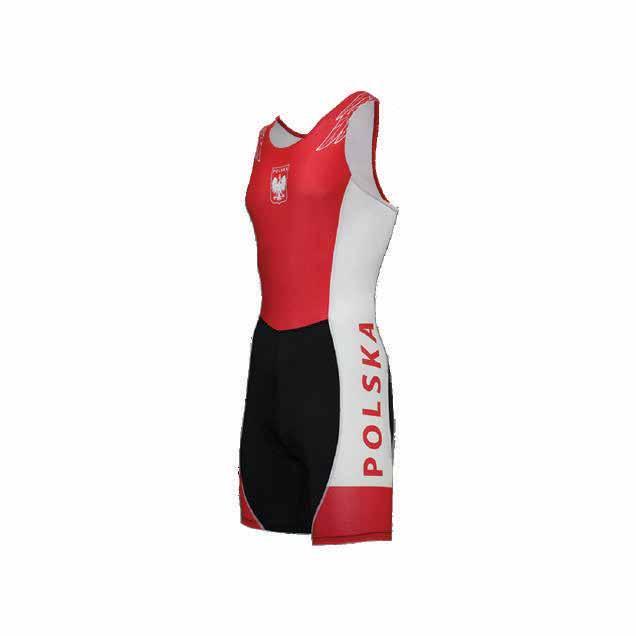
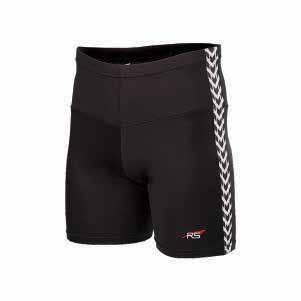

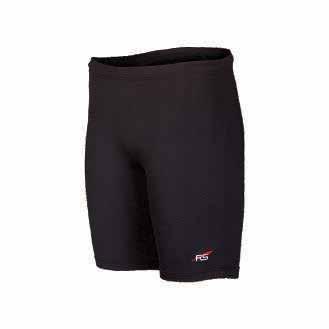

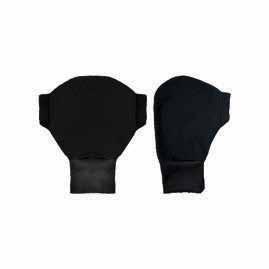
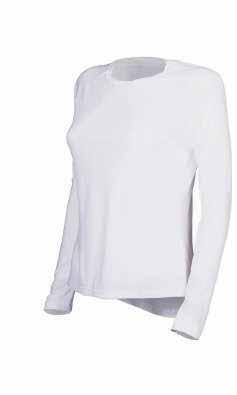

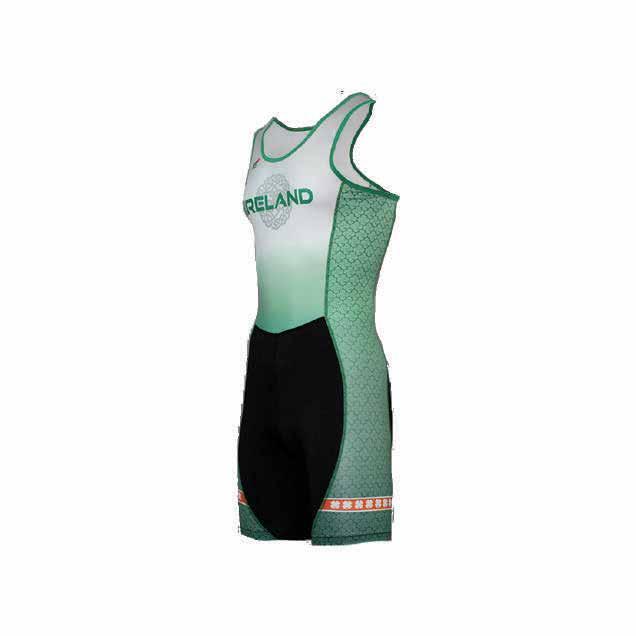


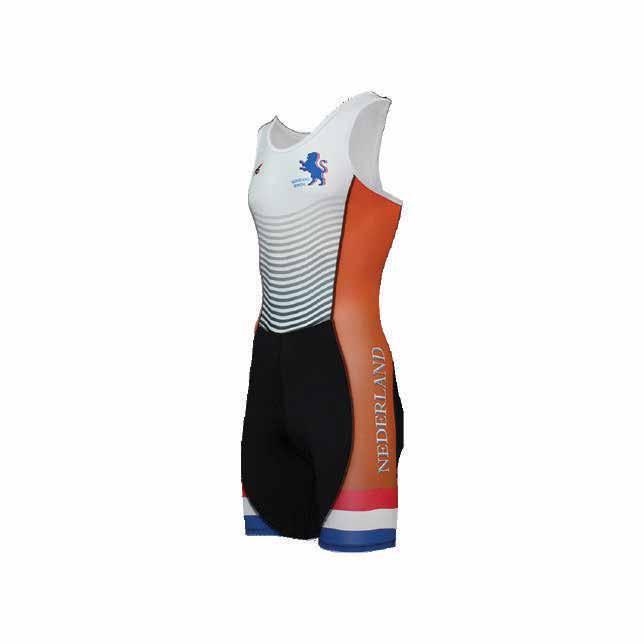








Training During the Transition Phase
The goal is not to improve fitness but to preserve as much conditioning as possible through exercise that’s primarily fun.
This time of year is a transition period in our annual training periodization, and while it’s important to get some rest and take your mind off the rigors of regular training, you also should use this time to renew your physical and mental health.
This is true for young and developing athletes as well as seasoned masters. On the physical side, the focus must be on healing persistent injuries while maintaining your hard-earned fitness. The strength and endurance you built up during the previous training and competition period will deteriorate if you don’t perform maintenance exercises.
Training during the transition phase is not aimed at improving fitness
but preserving as much conditioning as possible through exercise that’s primarily fun. Training load and duration can be reduced but not eliminated completely.
From a psychological perspective, now is the time to reduce the stress associated with demanding formal training and the challenges of racing while also engendering the motivation to begin again in a few months with renewed enthusiasm. Take time for visualization, mindfulness, and relaxation techniques.
In this regard, there’s much to learn from international teams that have been performing at the highest level for many years. A good example: the famous Kiwi pair of Hamish Bond and Eric Murray, who won their first world championship in
the straight four in 2007 before switching to the pair, where they were undefeated in national and international races from 2009 to 2016. Since New Zealand was known for rowing enormous distances, the two changed their training regimen routinely to maintain motivation, especially during transition phases.
After every successful world championship or Olympic Games, Bond and Murray went their separate ways, cycling a lot and rowing in single sculls or with friends from their home club in all kinds of boats. They varied their strengthtraining routines and participated in other sports.
Another example: Frans Goebel, the Dutch lightweight single sculler. I met him
SPORT SCIENCE
TRAINING
in 1988 after he finished second at the world championships in Milan and watched him load his single scull onto his motor home. Next, he unpacked his bicycle and got it ready to go.
When I asked what he was doing, he said he was starting his next season and planned to cycle back to The Netherlands
This is the time to do something you’ve always wanted to do and to challenge yourself in exciting ways.
from Milan, while his wife followed in the motor home. That’s a journey of 750 miles and includes crossing the Alps, which, because of the mountainous terrain, would probably take 10 days. For Goebel obviously, winning a silver medal was not enough, and he needed to do something completely different—some would say crazy. The many days on his bike certainly gave him plenty of time to think, and it paid off. The following two years, he won the world championships in lightweight single sculls.
Some suggestions for using your transition phase constructively: learn to row in a single scull; try a different sport; strength-train in a different way; go for a long hike; practice yoga, learn to surf; learn to meditate; learn a musical instrument, learn a new language; read entertaining or educational books.
This is the time to do something you’ve always wanted to do and to challenge yourself in exciting ways. The most important thing is not to do nothing!
It will take some time before you feel the benefits of your holiday training, so be patient and enjoy the process. Pay attention to how your body reacts to different movements and new experiences. All of this will help when you return to your college or club and begin training in earnest for the next rowing cycle.

Making the Most of Launch Time
As a coxswain, you want to choose your words carefully to reinforce and complement the coaching. In the launch, you can ask why certain phrases are or aren’t used.
No matter your program, the day will arrive when you’ll get to the boathouse and see that you’re up for a ride in the coaching launch. Maybe it’s a small-boats session; maybe you’re in a rotation of coxswains competing for a seat. Either way, time in the launch is an incredibly valuable way to develop your skills.
First, always be mentally and physically prepared to go in the boat. Even if you don’t have your CoxBox with you, you should be ready to hop in. Whether it’s part of the plan or an impromptu decision
by the coach, coxswains can be replaced mid-session, so be ready.
I talked with Abby Knight, head junior coach at Cambridge Boat Club, about how coxswains can get the most out of their time in the launch. Since CBC spends a lot of time in small boats, coxswains in the program have ample opportunity to ride in the launch.
Be prepared.
“The first thing I’m looking for when a coxswain is going to come out in the launch with me is: Do they have a
VOLKER NOLTE, an internationally recognized expert on the biomechanics of rowing, is the author of Rowing Science, Rowing Faster, and Masters Rowing. He’s a retired professor of biomechanics at the University of Western Ontario, where he coached the men’s rowing team to three Canadian national titles.
notebook?” Knight said.
Don’t expect yourself to remember everything. It’s useful to have a record of practice notes to which you can refer throughout the year and beyond. Many coxswains bring a small notebook to every practice, and you can make the most of it when you’re in the launch (one that is small and waterproof is a good investment).
“If you’re not taking notes, you’re not really soaking in everything you can get out of the opportunity of being in the launch,” Knight said.
Really listen and observe.
During practice, you’re trying to manage traffic, run drills, steer, and listen to and give feedback. The launch is your opportunity to do one thing at a time, so this is an excellent occasion to get granular with what your coach is saying.
“The launch is the time when coxswains can slow down and listen very specifically to the words I’m using when I’m coaching,” Knight said. “I always try to relay to my coxswains that I want them using the exact same technical words I’m using.
“I expect them to be writing down what technical cues I’m using so they can have that as a template for their calls, whether that’s in practice or in racing.”
As a coxswain, you want to choose
your words carefully to reinforce and complement the coaching. In the launch, you can ask why certain phrases are or aren’t used in your program. Asking the why behind the words will yield insight into your program’s technical priorities.
Watch the rowing.
This should be a really fun part of being in the launch. Challenge yourself to see what your coach is seeing but also to make your own technical observations. See if you can identify the individual or collective technical issues within the boat.
“This is a coxswain’s opportunity to get a really good look at the rowers,” Knight said. “What are you noticing technically from them, what is the coach pointing out technically for them? Then when you’re in an eight or a four you know specifically what each rower is working on.”
Try to connect what you see and feel in the boat with what your coach is saying to your rowers. If there’s something that’s tough to understand or different from what you observe in the boat, this is a great moment to ask questions. Connecting what you see from a side view to what you can see in an eight (or feel in a four) will increase your ability quickly to give accurate technical feedback to your crew.
If you’re watching other coxed boats, this is a fine opportunity to take note of
steering feedback given to other boats and to ask your coach where you should be on the river.
“A big part of managing practice is your being where I want you to be,” Knight said. “So this is your opportunity to see where I’m telling the coxswains to point, which is a little easier to see from the launch.”
Ask questions.
This is a precious opportunity to be one-on-one with your coach. Pick your moments well (don’t interrupt!), and it’s a sure bet your coach will love talking rowing with you.
“I’m looking for coxswains to be inquisitive— anything to show me that they are trying not just to get better but also lean into what we’re trying to do as a group,” Knight said.
Using your time in the launch well will sharpen your skills as a coxswain and help advance the technical development of your team by ensuring that you and your coach are sending the same message.

HANNAH WOODRUFF is an assistant coach and recruiting coordinator for the Radcliffe heavyweight team. She began rowing at Phillips Exeter Academy, was a coxswain at Wellesley College, and has coached college, highschool, and club crews for over 10 years.
TRAINING

Why You Should Get Started Early
Early preparation gives student-athletes the foundation they need to be successful academically, athletically, and personally.
Many readers have heard me emphasize the importance of starting early in the rowing recruiting process. Recently, a parent of a ninth-grade rower asked me a great question: Why should we begin thinking about university selection when our teenager is only a freshman?
The answer goes far beyond simply “better early than late.” Early preparation gives student-athletes the foundation they need to be successful academically, athletically, and personally when it’s time to make one of the biggest decisions of their lives.
Academic Preparation
There’s a common misconception that the only thing that matters in rowing recruitment is your 2K erg score. That’s not true. College coaches and admissions offices are looking for a complete student-athlete— someone who performs at a high level both on the water and in the classroom.
Strong grades, a challenging course load, and competitive SAT or ACT scores all play a major role in admissions. Many of the top rowing programs are at elite universities with rigorous academic standards. Beginning to focus on academics early—as early as ninth grade—helps students establish habits, motivation, and results that align with the schools they may one day want to attend. SAT/ACT Preparation
While many universities are currently test-optional, this policy is evolving. Some schools have already reinstated testing requirements, and others are expected to
follow. Knowing the score ranges for your target universities early allows you to plan ahead.
Like rowing, standardized testing rewards practice and preparation. Working with your school’s counselors or independent experts can make a measurable difference. Consistent effort, whether on the erg or in test prep, leads to improvement and confidence when it matters most.
Athletic Development
If your goal is to row for a university program that demands top-level erg performance, the path begins long before your senior year. Setting clear goals early and developing a structured training plan will give you time to make steady, sustainable progress.
Your local coach is your best starting point. Discuss your long-term goals and how to integrate any additional training into your team’s program. The key is balance— improving without overtraining and staying aligned with your current team’s priorities.
The Bottom Line
Starting early in the rowing recruiting process isn’t about rushing decisions; it’s about preparation. Building strong academic habits, developing athletic potential, and understanding what universities are looking for gives student-athletes more choices and less stress when the time comes to commit.
What to Know About Sport Supplements
While supplement companies often pay researchers to study their products, they’re not inclined to promote false claims that will damage their credibility and reputation.
As a sport dietitian, I get asked many questions about supplements: What’s the best protein powder? Pre-workout energy booster? Recovery drink? Are these products all they’re promoted to be?
To address that question, I scoured a lengthy scientific paper about dietary supplements and common misconceptions in the Journal of the International Society of Sports Nutrition. But before presenting the key points, a word of caution:
For reliable supplement information, best not to believe what you read and see on Instagram and TikTok. Instead, choose to get personalized information by meeting with a registered dietitian nutritionist (R.D. or R.D.N.) who is a certified specialist in sports dietetics (C.S.S.D.). By Googling “sports nutrition RD near me,” you can find a local registered dietitian and specialist in sports nutrition. Consultations usually are covered by health insurance, so don’t let cost stop you. If the supplements you’re buying are unnecessary or worthless, a certified expert in sports nutrition could save you money.
Supplements are big business. In 2023, the U.S. dietary supplement industry (vitamins, minerals/electrolytes, herbs, botanicals, amino acids, enzymes, etc.) was valued at more than $54 billion. Amazon alone sold $12.6 billion in vitamins, minerals, and related supplements. (By comparison, the sale of prescription medications was 30 times bigger—about $670 billion.)
Regulation is loose and confusing. The
ROBBIE TENENBAUM coached at the NCAA level for over 30 years and with the U.S. Junior National Team for eight. He now helps rowers and families navigate the university recruiting process.

FDA regulates Red Bull not as a supplement but as a food/beverage. Red Bull contains caffeine; FDA regulations limit caffeine content in the food/beverage category to less than 400 milligrams per serving. That’s the safe upper limit per day for adults. Yet restaurants and coffee shops do not have to declare the caffeine content of their products. Regardless, an athlete can consume an unlimited number of energy drinks or cups of coffee in a day. That’s problematic because the dose is the poison. Very high doses can lead to heart arrhythmia and trips to the ER. Dietary sport supplements do not need to be pre-approved by the FDA, unlike pharmaceutical drugs. Manufacturers of recovery drinks and protein powders need to ensure safety, comply with labeling laws, and include specific information on the Supplement Facts Panel. But unlike the Nutrition Facts Panel for food, the Supplement Facts Panel does not have to state specific amounts of ingredients, such as grams of caffeine or protein. Many supplements claim to include a mysterious “proprietary blend.” Who knows what’s in that pre-workout drink, fat burner, or metabolic booster?
A supplement is deemed “safe” based on the expectation that it will be used as intended. This means that adverse reactions get reported and dealt with after causing harm. (This differs from a food additive that must be proven safe before being listed as Generally Regarded As Safe.) A supplement
manufacturer is required to report all serious adverse events to the FDA and record all non-serious events. Often, these adverse incidents are underreported.
The label of a sport supplement cannot include a claim to cure, mitigate, treat, or prevent a disease. That’s why you see vague “structure and function” claims that describe how a supplement might affect body structures (bones, fingernails) or functions (digestion, circulation). Common claims include “supports heart health” (as opposed to a drug that might claim “lowers cholesterol”).
Supplement companies often pay researchers to study their products. Gatorade has funded numerous research projects related to dehydration. Beet Elite has funded research on beets/nitrates as performance enhancers. Does that mean the research results are biased and questionable?
Usually, researchers and scientific consultants sign agreements that allow them to design the project objectively, submit the results for review by their peers, and report both positive and negative findings. Most companies and the scientists they hire are not inclined to promote false claims that will damage their credibility and reputation. Despite being regulated for safety, dietary supplements can be contaminated with heavy metals, microplastics, or other undesirable substances. To avoid banned, contaminated, or risky ingredients, be sure to buy a product that verifies its quality and
safety. On the label will be a third-party certification icon from NSF, BSCG, or USP. The Department of Defense offers Operation Supplement Safety with a tool to check your supplements for contaminated and banned substances. These resources are far better than any (mis)information from TikTok, Instagram, or AI.
Most sport dietitians recommend a food first approach to enhance performance, but that doesn’t mean food only. If you’re restricting your food/calorie intake, eliminating food (dairy, red meat), or making weight for a sport, you are at increased risk for nutrient deficiencies. If you’re eliminating ultraprocessed grain foods (“refined carbs”), you can miss out on fortified foods with added iron or zinc or enriched foods that replace nutrients lost during processing, such as B vitamins and fiber.
There’s a time and a place for supplements in an athlete’s diet. For example, athletes need about three to five grams of creatine a day to improve performance. That’s the amount in about two to four and a half pounds of meat. While a carnivorous bodybuilder may be able to ingest that much animal flesh, it’s unlikely for most athletes.
NANCY CLARK, M.S., R.D., C.S.S.D., counsels both fitness exercisers and competitive athletes in the Boston area (Newton; 617-795-1875). Her best-selling Sports Nutrition Guidebook is a popular resource, as is her online workshop. For more information, visit NancyClarkRD.com
TRAINING

Calculating Your Hazard Score
The hazard point usually peaks in the middle of the race when you feel some relief that the event is more than half over. The risks go down as the race goes on.
Rowing out of your comfort zone is a must for reaching higher limits as an athlete, and there’s no better place to execute than on the racecourse.
The hazard point usually peaks in the middle of the race when
you feel some relief that the event is more than half over.
But to avoid a crash-and-burn or going out too easy as the field pulls meters ahead, you need to be able to judge your effort. You can even-split (hold a set pace), negative-split (start slow and build speed until the finish), or positive-split (start fast to claim a big lead, then slow down enough to save energy but hold off other crews).
Pacing is learned by repeated racing, and you can rely on plenty of objective measures—stroke ratings, splits, heart rate—but a key measure is purely
subjective: how you feel.
Consider pacing your internal hazard score. You weigh what you’re experiencing in the moment against the amount of racing yet to come. If your calculation is too large, you risk slowing down too early if the pace is increased. Hence, your hazard score is high.
The hazard point usually peaks in the middle of the race when you feel some relief that the event is more than half over. As the remaining distance decreases, stroke by stroke you can compare the advantage of increasing your pace versus fatiguing before the line. The risks go down as the race goes on.
At the halfway point, most rowers, sensing the homestretch, tend to increase speed. To gauge your effort more precisely, using distance markers or counting strokes in your race plan will enable you to pinpoint where you are each meter down the course and help you fine-tune your output.
MARLENE ROYLE, who won national titles in rowing and sculling, is the author of Tip of the Blade: Notes on Rowing She has coached at Boston University, the Craftsbury Sculling Center, and the Florida Rowing Center. Her Roylerow Performance Training Programs provides coaching for masters rowers. Email Marlene at roylerow@aol.com or visit www.roylerow.com.
COACH DEVELOPMENT
Coping With Uncertainty
These mindset shifts and practical tools can help coaches lead better with imperfect information and focus on what really matters.
The only certainty is that nothing is certain. Pliny the Elder said that, or something like that. This is as true in coaching as it is in life. One minute you’re planning practice, the next you’re dealing with an injured athlete or an NCAA rule change or even a global event that trickles down to the boathouse. Uncertainty is an unavoidable reality, and learning to thrive in it takes practice.
Recently, I led a workshop for head coaches within a local college athletic department. They were feeling weighed down by the seemingly never-ending stressors of the job—winning, recruiting, budgeting, team management, staff development, long hours, and on and on. Not to mention outside stressors they brought up—campus leadership, national tensions, and, invariably, work-life harmony.
A common theme exacerbating a lot of the stresses these coaches were facing was uncertainty. Neuroscience backs this up. Research shows that uncertainty actually impacts our brains and bodies more negatively than bad news itself. In studies, people experienced higher anxiety, spikes in amygdala activity, and stress responses such as elevated heart rate and cortisol when they didn’t know when a small shock was coming compared to knowing it was certain. That lack of control, when unchecked, fuels stress, fear, and eventually burnout.
The good news, though, is that there are some mindset shifts and practical tools that I’ve seen be effective in helping coaches manage their response to uncertainty so they can lead better with imperfect information and focus on what really matters.
Keep the main thing the main thing.
If everything feels urgent, nothing
PHOTO: LISA WORTHY.
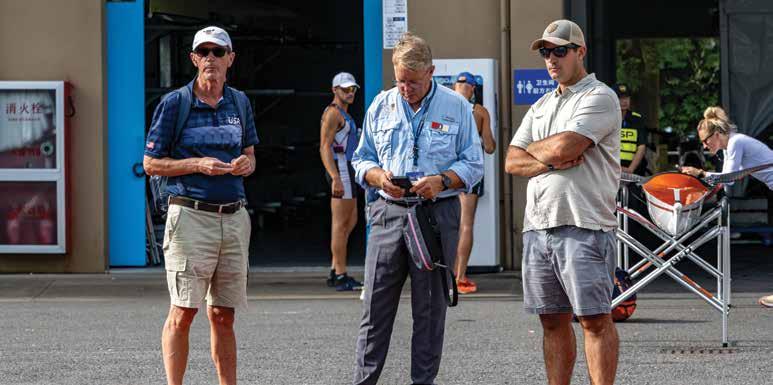
important actually gets done, or gets done well. When you’re too busy picking fights with your administrator or re-rigging the boat yet again, you miss out on evaluating the team performance trends or ensuring that the team is actually living your team values.
The best coaches I know hold their personal values and team philosophy in their core. They use them to anchor every decision, from whom to recruit to how to respond to a misbehaving team member. Crucially, this knowledge also dictates what they don’t focus on. They can cut through the noisy distractions, decide what to let go of, and how to stay focused on the long-term development of their team, instead of getting whiplash from chasing the latest distraction.
(While Jalen Hurts didn’t invent the idea—Stephen Covey did— the Philly quarterback talks about it a lot. And he’s never wrong.)
Control what you can control.
It’s easy to waste a lot of energy worrying about things that, ultimately, we have no control over. We all do it. How much time have you spent fretting over the weather forecast or how another team is training?
It’s only natural. But it’s a waste.
My recommendation: Use the circle of control. Take a look at everything that’s stressing you out. Group them into three categories: what you have control over (the circle of control); what you have influence over (the circle of influence); and what you simply cannot affect (the circle of concern). Be honest about where things really fall. For example, you do not have control over where a recruit chooses to go. You can influence it, but it’s up to that recruit ultimately. That falls in the circle of influence, at best.
Then you need to focus your time and attention on the first two circles and do your best to let go of the third. When you double down on the controllables, you feel more effective and therefore more steady, which is exactly what your team needs from you. Make a plan.
Uncertainty leads so many coaches into two traps: overreacting (scrapping a training plan after one bad erg piece) or freezing (waiting for the perfect moment to lock in a lineup). Neither helps their crew improve.
Now that you’ve focused your actions
on what really matters and what you have control over, you have to take action, even if it’s not perfect. Identify one or a few things you can tackle this week. Determine what obstacles could get in your way and decide how you’ll respond before they come up. Communicate this clearly to your fellow coaches and your athletes. Then, get going.
A good plan won’t eliminate uncertainty, but it will give your team, and you, the confidence that you’re steering the ship, even if the waters are choppy.
Uncertainty isn’t going anywhere. But when you know what matters, what you can control, and what your plan is, you can be an effective leader despite it. So instead of drowning in the unknown or lashing out with reactive actions, take a breath, consider these three ideas, and you can get back to leading your team with clarity and confidence.
MADELINE DAVIS TULLY competed as a lightweight rower at Princeton and on the U-23 national team before coaching at Stanford, Ohio State, Boston University, and the U-23 national team. Now a leadership and executive coach, she is the founder of the Women’s Coaching Conference.
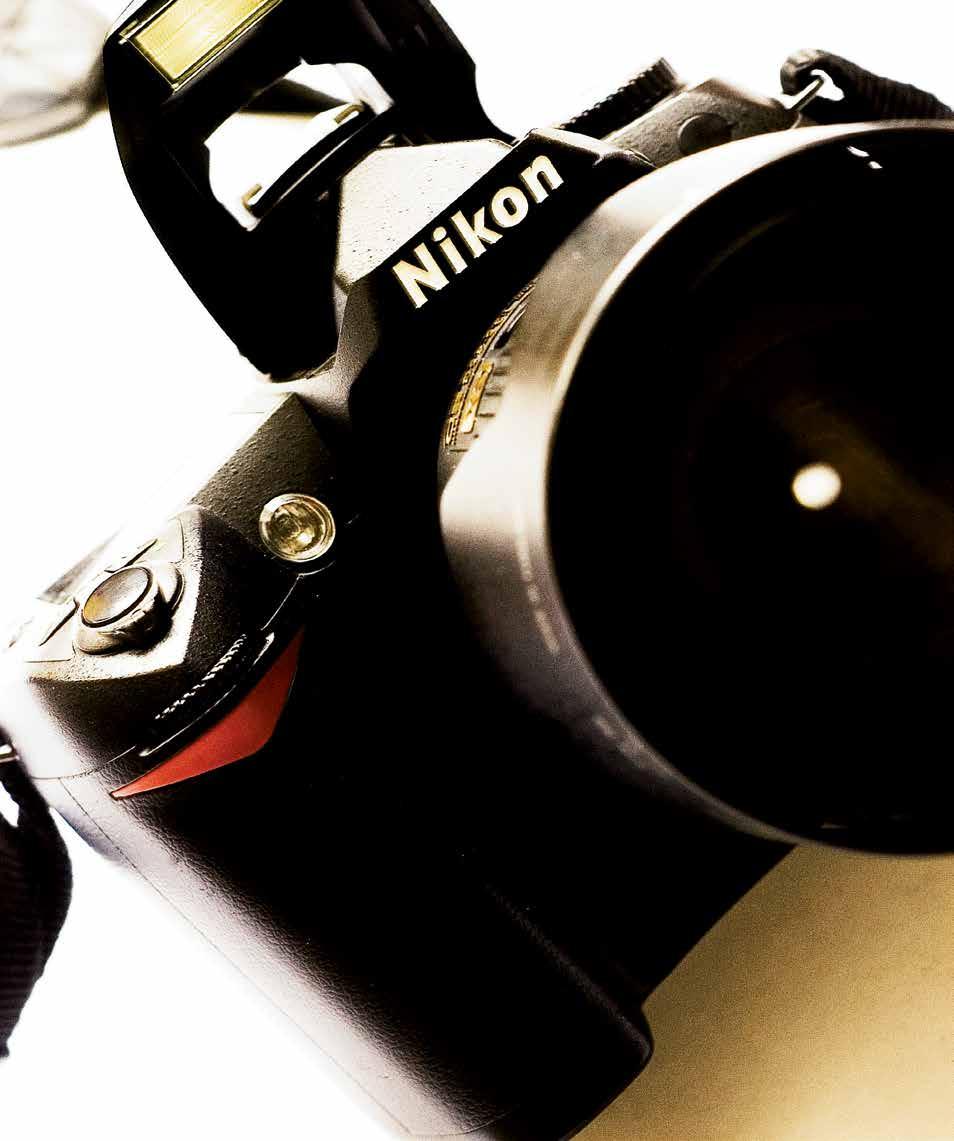

ADVERTISERS INDEX
Active Tools 17
Be Brave 29
Bont Rowing 4
Concept2, Inc 67
Fluidesign 6..7
GLRF 26
Hudson Boat Works 2..3
Leonard Insurance 59
Maas Boats 56
Muser Inc 16
NBP 20
Nielsen-Kellerman 5
Overnght 25
Peinert Boatworks 10
Pocock Racing Shells 8..9
RegattaSport 16
Robbie Consulting 26
RowAmerica 12..13
San Diego Crew Classic 68
Shimano North America 15
SportGraphics 30..31
Statement of Ownership, Management, and Circulation 1. Publication Title: ROWING NEWS. 2. Publication Number: 0016-091. 3. Filing Date: September 25, 2025, 4. Issue Frequency: Monthly. 5. Number of Issues Published Annually: Twelve. 6. Annual Subscription Price: Seventy-Five Dollars. 7. Complete Mailing Address of Known Office of Publication (not printer) (Street, City, County, State, and ZIP+4): 53 S Main St, Hanover, NH 03755-2022. Contact Person: Vinaya Shenoy, Telephone: 603-306-2455. 8. Complete Mailing Address of Headquarters or General Business Office of Publisher: PO Box 831 Hanover NH 03755. 9. Full Names and Complete Mailing Addresses of Publisher, Editor, and Managing Editor: Publisher (Name and complete mailing address): Charles C. Davis, PO Box 831, Hanover, NH 03755. Editor: Charles C. Davis, PO Box 831, Hanover, NH 03755. 10. Owner: Charles C Davis, PO Box 831, Hanover, NH 03755. 11. Known Bondholders, Mortgages, and Other Security Holders Owning or Holding 1 Percent or More of Total Amount of Bonds, Mortgages, or Other Securities: None. 12. Tax Status (For completion by nonprofit Organizations authorized to mail at nonprofit rates): Has not changed during Preceding12 months. 13. Publication Title: ROWING NEWS. 14: Issue Date for Circulation Data Below: October 2025. 15. Extent and Nature of Circulation: a. Total Number of Copies (Net press run) Average No. Copies Each Issue during Preceding 12 Months: Four Thousand and seven hundred. No. Copies of Single Issue Published Nearest to Filing Date: Four Thousand Eight hundred and sixteen. b. Paid/Requested Circulation: 1. Mailed Outside-County Paid Subscriptions Stated on PS Form 3541(include advertiser’s proof and exchange copies): Average No. Copies Each Issue During Preceding 12 Months: Four Thousand Five Hundred and Forty-nine. No. Copies of Single Issue Published Nearest to Filing Date: Four Thousand Six Hundred and Ninety-Six 2. Mailed in-County Paid Subscriptions stated on Form 3541: Average No. Copies Each Issue During Preceding 12 Months: Zero. No. Copies of Single Issue Published Nearest to Filing Date: Zero. 3. Sales through Dealers and Carriers, Street Vendors, Counter Sales and Other Non-USPS Paid Distribution: Average No. Copies each Issue During Preceding 12 Months: Zero. No. Copies of Single Issue Published Nearest to Filing Date: Zero. 4. Other Classes Mailed Through the USPS: Average No. Copies Each Issue Preceding 12 Months: Sixty-seven. No. Copies of Single Issue Published Nearest to Filing Date: Seventy. c. Total Paid and/or Requested Circulation: Average No. Copies Each Issue during Preceding 12 Months: Four Thousand Six Hundred and Sixteen. No. Copies of Single Issue Published Nearest to Filing Date: Four Thousand Seven Hundred and Sixty-six. d. Free or Nominal rate Distribution by Mail (By Mail and Outside the Mail): 1. Outside-County as Stated on Form 3541: Average No. Copies Each Issue During Preceding 12 Months: Zero. No. Copies of Single Issue Published Nearest to Filing Date: Zero 2. In-county copies as stated on Form 3541: Average: Zero. Published Nearest to Filing Date: Zero. 3. Other Classes Mailed Through the USPS: Average: Zero. Published Nearest to Filing Date: Zero. 4. Free Distribution Outside the Mail: Average: Zero. No. Copies of Published Nearest to Filing Date: Zero. e. Total Free Distribution: Average No. Copies Each Issue During Preceding 12 Months: Zero. Total Free Distribution: No. Copies of Single Issue Published Nearest to Filing Date: Zero f. Total Distribution: Average No. Copies Each Issue
During Preceding 12 Months: Four Thousand and six hundred and sixteen. Total Distribution: No. Copies of Single Issue Published Nearest to Filing Date: Four Thousand seven Hundred and Sixty-six. g. Copies Not Distributed: Average: Eighty-four. Copies Not Distributed: No. Copies Published Nearest to Filing Date: Fifty. h.Total: Average: Four Thousand Seven Hundred. Total: No. Copies Published Nearest to Filing Date: Four Thousand Eight Hundred and sixteen. Percent Paid: Average No. Copies Each Issue During Preceding 12 Months: One Hundred percent. Percent Paid: No. Copies of Single Issue Published Nearest to Filing Date: One Hundred Percent. 16. Electronic copy circulation. Average no. Copies each issue preceding 12 months: a. Paid Electronic copies: Eighty. No. copies of Single issue published nearest to Filing date: Nine Hundred and Sixty. b. Total Paid Print and Electronic Copies: Average no. Copies each issue preceding 12 months: Four Thousand Six Hundred and Ninety-six. No. Copies of Single Issue Published Nearest to Filing Date: Five Thousand Seven Hundred and Twenty-six. c. Total Print distribution plus paid electronic copies: Average: Four Thousand Six Hundred and Ninety-six. Published Nearest to Filing Date: Five Thousand Seven Hundred and Twenty-six. d. Percent Paid: Average: One Hundred percent. Published Nearest to Filing Date: One Hundred Percent. I Certify that Fifty Percent of all distributed copies are paid above a nominal price. 17. Publication of Statement of Ownership: Publication required. Will be printed in the November 2025 issue of this publication. 18. Signature and Title of Editor, Publisher, Business Manager, or Owner: Chris Pratt, Associate Publisher. I certify that all information furnished on this form is true and complete, I understand that anyone who furnished false or misleading information on this form or who omits material or information requested on the form may be subject to criminal sanctions (including fines and imprisonment) and/or civil sanctions (including civil penalties).
DOCTOR ROWING CON’T FROM PAGE 66 >>>
nearer to the start, have their devotees. The arches on these two are narrow and dark underneath. On a really sunny day, sometimes a sculler coming out of them will be momentarily blinded. I’ve seen some terror-stricken dudes when the crowd begins roaring, ‘Look out! Look out!’
“The other bonus about watching here is that most of the time, even on nice days, there’s choppy water between the two bridges, the product of the seawall that runs between them. One year, I saw some poor guy who wasn’t prepared hit the chop and flip. And that wasn’t the worst of it; someone had their phone out and posted the video of him diving under water for the next 10 minutes every time the next sculler came by. Dude was lucky he wasn’t decapitated.
“Jimmy Joe says that there’s nothing better for team unity than being told to row all eight square blades on your way down to the start. Togetherness is built—everyone hates the cox. There’s no feeling in all of sport like hammering your knuckles into the gunnel on a raw autumn day, Jimmy Joe says.
“Another favorite trick of ours is to pick out crews on shore with overweight coxswains, usually in the masters events. Like those poor bastards in the coxed four don’t have enough to worry about without dragging some guy who 20 years ago weighed 120 down the course. I swear I’ve seen ’swains who outweighed their strokes. Anyway, we like to yell things like, ‘Hey, you need a coxswain in that boat’ or once they’ve gotten into the boat and it settles low in the water, ‘Hey stroke, you’re rigged too low. You’ll never make it through the race with your blade on the water.’
“OK, the big one. The Eliot Bridge. This is the one with all the best socialmedia posts. This is where you want to be when the championship eights come churning down the course. Looking downstream, anybody who is more than a length outside the buoys as they come into view is not going to make it. But don’t focus solely on the bridge. I’ve seen some great stuff on the Cambridge and BB&N docks. Boats making spectators jump over their oars. Boats running up
onto the dock, coxswains never saying a thing. Collisions between launching and racing shells.
“This year, there’s repair work going on, so the right-hand arch is closed off. Without it as an escape valve for crowded boats, I predict a banner year for crashes. The mother of all collisions is a three-boat squeeze in the championship eights through the center arch. Like sharks with blood in the water, the crowd at Eliot will go nuts.
“People think that rowing is a gentleman’s sport, a tea-and-crumpets, pinky-upraised kind of affair. Bull! If you want to see war, this is the place. Look at how those big dudes and women, too, in the black shirts, most of them probably exMarines, intimidate that boat beside them. Watch the coxswains try to figure out if they should keep rowing with only six oars.
Remember, this sport is all about pain; if you want to be at the point where pain and misfortune converge, the Eliot is it. On Sunday from 2:15 on, that’s where I’ll be. Enjoy yourself at the Head. There’s something for everyone.”
Last Tens—Head of the Charles musings
Definitely playing my Old Man card here, but rowing your brains out in a hard race and then having bags of beer lowered down by alums on the row back—a tradition that has been lost—that was the best. I miss the days when you could have a beer after the race without having to pay outrageous prices.
Now that the Yankees beat the Sox in the playoffs, will some New York crew dress in Yankees uniforms to row the Charles? Like Brown did in Mets uniforms in 1986. Does anyone row head races naked anymore? It’s been done: Head of the Trent, in the’90s.
Do any coxswains have CoxBox speakers mounted on the bow deck facing forward to yell “Yield!” at crews they are overtaking?
Will some crazy invention be unveiled? Concept2’s Big Blade made its debut here in 1991.
DOCTOR ROWING, a.k.a. Andy Anderson, has been coxing, coaching, and sculling for 55 years. When not writing, coaching, or thinking about rowing, he teaches at Groton School and considers the fact that all three of his children rowed and coxed—and none played lacrosse—his single greatest success.
DOCTOR ROWING
ANDY ANDERSON
How to Watch the Head of the Charles
A cheeky guide to the best places to see the action, mayhem, and fun from a super fan who has attended the storied regatta 25 times.
Many of you have seen him at the big head races, binoculars bored into his eye sockets, a faded USA Rowing hat pulled forward over his balding pate. Most likely, he’s wearing a threadbare Syracuse betting shirt, despite never having rowed himself. This will be his 26th consecutive Head of the Charles. Recently, I caught up with rowing’s super fan—Duane J. Chapin.
“I first came to Boston in 2000 to see my cousin Jimmy Joe row. He was good, really good, so big and powerful that he made the oar look like a toothpick in his hands. Seeing that big broad back in a boat made you think that you’d need to load up a camel train to cross that expanse.
“He’d told me that it would be a fun day, with a lot of kegs along the riverbanks, so I thought, Why not? Back then, kegs were allowed. The next year, they were banned because of public drunkenness, but one of the MIT frats buried a bunch of kegs the night before along the shore and the beer kept flowing.
“If you can’t handle a little crowd noise, well, maybe you shouldn’t be out there.”

“I got to Harvard Square late and wasn’t sure where to go but I followed the stream of people down toward the river. One guy said, ‘Go to one of the bridges.’ The first bridge was the Anderson Bridge, so I walked up to get a look. Below me, I saw a couple of boats pointed at each other, trying to squeeze through at the same angle, neither one giving an inch.
“Hello, I said. This looks more exciting than I thought it would be. Sure enough, both of the boats kept playing their game of chicken. They collided. One guy kept rowing, even though his oar was smashing against the rowers in the other boat, catching one guy in the back, another under the chin. A lot of cursing and shouting.
“My God, I thought, this is it. A sport to rival roller derby or UFC fighting. The people around me were into it, too, howling for more. From then on, every time a pair of boats converged on the bridge together, we screamed our encouragement. ‘Don’t yield! You can both make it! Full speed ahead!’
“I didn’t see any other real crashes that day, just a couple of oars that smacked against the unforgiving bricks, but I was hooked. This was serious stuff, monster trucks with college degrees.
“Imagine my surprise later on when I found out from Instagram that I hadn’t even been watching at the best bridge. Well, I’ve made a point of coming back and watching from all different points, and I can tell you that there are no bad bridges; some are just more dangerous than others. All near misses are alike; each crash is exciting in its own way.
“The Footbridge is underrated. Sure, you rarely see a boat hit the abutment, but it’s so low that a fan can get close enough to almost be part of the race. My cousin Jimmy Joe said he’d never forget the time a few years ago that I had my buddies hang me over the side by my ankles. As his boat came under the bridge, I shrieked, “Two-man, look out for the bridge” from about five feet over his head. You should have seen the look on his face as he panicked and caught a crab.
“I know, you’re thinking that I’m one of those yahoos who think it’s pretty funny to drop water balloons, but I draw the line there. There’s no excuse for physical interference. But if you can’t handle a little crowd noise, well, maybe you shouldn’t be out there. Why not try croquet, chess, or interpretive dance?
“The River Street and Western Avenue bridges, down

Michelle Sechser
